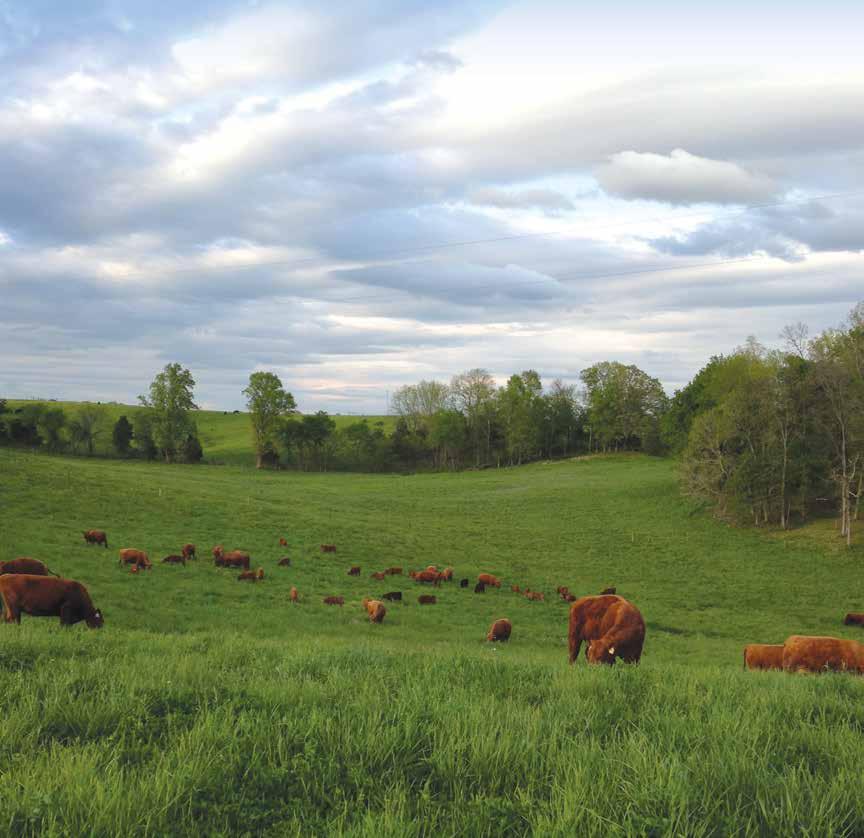

BECKTON’S 78th Anniversary BULL and HEIFER SALE
Tuesday, April 11, 2023

Selling 300 Red Angus

250 Bulls and 50 Heifers
1:00 pm at our ranch 10 miles west of Sheridan
Delivered free anywhere in the continental U.S.
Video of sale animals will be available on our website.
Direct line telephone bidding will be available.























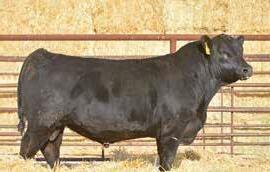
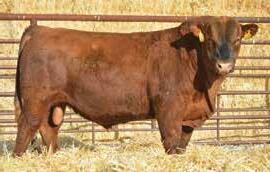
Magazine
Official Publication of the Red Angus Association of America
Volume 59, Number 2
18335 E 103rd Avenue, Suite 202 Commerce City, CO 80022
(940) 387-3502 • Fax (888) 829-6069 RedAngus.org
Publisher/Advertising Director Tracey Koester (701) 391-5440 • tracey@redangus.org
Editor Brandi Buzzard Frobose (785) 448-0239 • brandi@redangus.org
Subscriptions and Circulation Margaux Midas (940) 387-3502, Ext 7 • email: margaux@redangus.org
Affiliated with National Cattlemen’s Beef Association Beef Improvement Federation U.S. Beef Breed’s Council National Pedigreed Livestock Council




GENERAL INFORMATION
Published 10 times annually by the Red Angus Association of America at the national headquarters (18335 E. 103rd Ave., Suite 202, Commerce City, CO 80022). A non-political magazine dedicated to the promotion and improvement of breeding, feeding and marketing Red Angus cattle. Subscription rate: U.S., 1 year - $30.00; 2 years - $55.00. Canada and Mexico, 1 year - $44.00, 2 years - $82.00 (Payable in U.S. Funds Only). International Air Mail, 1 year - $55.00; 2 years - $100.00 (Payable in U.S. Funds Only). These rates are based on Third Class Bulk mailed from Jefferson City, Missouri. Add $20.00 per year for First Class.

EDITORIAL AND ADVERTISING POLICY
Advertising and editorial content are not limited to any particular class of product or subject matter. However, we reserve the right to refuse publication of any material not within the bounds of high agricultural ethics. While we devote the utmost care to the preparation of each advertisement, we cannot be held responsible for ads received after the ad deadline. Furthermore, the accuracy and content of copy received over the telephone is entirely the responsibility of the advertiser. No adjustment for incorrect ad copy will be considered for ads that are received after the ad deadline or that are placed over the telephone.
All unused reserved advertising space that is not canceled by the advertising deadline will be billed to the advertiser.
ADVERTISING RATES – Full Color
Page $630 $600 $580 1/4 Page $550 $525 $505
Page $450 $440 $430 Breeder Directory



RAAA Board of Directors
PRESIDENT
Steve Koester | Steele, North Dakota koesterredangus@gmail.com
FIRST VICE PRESIDENT
AREA 4 DIRECTOR - SOUTHWEST
Tony Ballinger | Morgan Mills, Texas anthony.ballinger@adm.com


SECOND VICE PRESIDENT
REGION C DIRECTOR

Jeff Pettit | Sebree, Kentucky jeff@diamondpcattle.com
AREA 2 DIRECTOR - MONTANA
BOARD SECRETARY
Kay Klompien | Manhattan, Montana klmpnra@gmail.com
REGION A DIRECTOR
Chuck Feddes | Manhattan, Montana feddesredangus@gmail.com
REGION B DIRECTOR
Craig Bieber | Leola, South Dakota craig@bieberredangus.com
AREA 1 DIRECTOR - WEST
George Murdock | Pendleton, Oregon murdockcattle@gmail.com

AREA 3 DIRECTOR - ROCKY MOUNTAIN


Aaron Kravig | Karval, Colorado akravig@kravigredangus.com
AREA 5 DIRECTOR - NORTHERN PLAINS
Stephanie Jung | Mina, South Dakota lazyjbarranch@yahoo.com
AREA 6 DIRECTOR - GREAT PLAINS
Jason Anderson | Oberlin, Kansas jasonea9@hotmail.com
AREA 7 DIRECTOR - NORTHEAST
Rob Hess | Hershey, Pennsylvania hessfarm@verizon.net
AREA 8 DIRECTOR - SOUTHEAST

Jim Yance | Columbia, Alabama jim@jyjredangus.com
AREA 9 DIRECTOR - MIDWEST
Stuart Gilbert | Stockport, Iowa redcowrelocators@gmail.com
Board Commentary
Service and Loyalty Go the Distance
by George Murdock, Area 1 DirectorYears ago, I read a book entitled “Up the Organization” by Robert Townsend, whose mission was to propel AVIS forward as a competitor with Hertz. His theme was “We try harder.”
Not too long ago, CEO Tom Brink shared statistics defining the largest breeds in America. While black Angus is No. 1 and Hereford was No. 2, Red Angus is breathing down the neck of the Herefords.
Those knowledgeable in genetics would suggest that one of the great mysteries of the cattle industry is why everyone in America isn’t raising Red Angus in light of their excellent qualities. Superior genetics are the foundation, but they need to be supported by other factors to achieve success. I am old enough to remember driving across Montana and seeing endless herds of Herefords grazing alongside the highway. Somewhere along the way that scene changed.
Such a transition didn’t come about because of genetics alone. I harken back to my opening reference to AVIS and the practices which were promoted by Townsend – practices that are used by successful purebred breeders across the country and concepts that have been in place either consciously, or unconsciously, for years.
For the sake of narrowing the discussion, let’s focus on bull sales. Late each spring, as the results of those sales are tallied, average prices from one sale to the next reveal differences due to multiple factors.
Since we are talking about cars, I defer to my late friend Josh Dykes who built up the Nine Mile Ranch in a spectacular fashion. Although Josh, who went to college with my son, had been around cattle most of his life, it wasn’t until he founded the Nine Mile operation that things really took off.
The foundation for the Nine Mile operation was built when he sold off his interests in the car business. Josh brought a lot of lessons learned from his vehicle empire along with him when he became fully dedicated to raising cattle. It wasn’t just his

When Everything Is On The Line























Board Commentary: Service and Loyalty Go the Distance own personal skills in management, customer service and salesmanship that led to his success – it was also his awareness of the need to surround himself with experts. He was dedicated to taking care of his customers. He also understood the importance of helping market his customers’ calves and having an interest in their programs.
Josh learned early the foundation of the car business is repeat customers. That’s true throughout much of the business world.
When a major rancher is about to sell 200 bulls, if he is counting on finding 200 new buyers, he won’t have a good day. Repeat customers are the lifeblood of successful bull sales.
The best in the breed have learned that one can never take repeat customers for granted – it’s critical to provide them with a better product,
coupled with a heavy dose of goodwill. Seedstock producers have an obligation to offer genetic leadership and direction to help their customers succeed. A good breeder should provide bulls that are hardy and tolerant of the elements and don’t provide any surprises unless they are good ones.
It is also critical to be mindful of the importance of reputation, dependability and service. The latter quality, service, is a little different in the bull sale world, but what it really refers to is the on-going relationship and responsiveness created by the seller after the sale. Dependability, interest and reputation are the opposites of one-and-done.
As Townsend points out in his book, how we treat the people around us and how we make them feel is another vital element of creating loyalty. How often during a sale will the auctioneer or the producer point out when a
bull goes to a return customer? And how does the buyer feel when this is mentioned, particularly because they usually add the term, “They always find the good ones.”


People like to spend time in places where they are respected and feel welcome. People are more likely to invest in attending sales or visiting ranches when those factors are at play.
One of the reasons Red Angus has become so successful and will continue to cut away at the statistical margin is because the very qualities and practices we have been talking about are a characteristic of Red Angus breeders.
As we move forward, it is something we need to cultivate further. Certainly, our future lies in genetic advancements, but it is critical that a superior product continues to be accompanied by creating a positive marketing environment among those in the breed. //












1A
BD: 8-10-21
KOESTER STOCKMARKET 129 (#4604539)
HERDSIRE PROSPECT! This Stockmarket x Full House meatwagon will sire cattle that raise the bar for premium earners in the feedlot and on the rail with their high ADG and top-ranking Marbling, Yield Grade and REA.
By Design ...
Our fall-calving program is by design. Our cattle are bred, born and raised to excel in conditions opposite of most production seasons. They are tough, resilient and prolific. Sure, calving in August might be easier than March, however maternal and actual performance in the winter are antagonistic to nature and we identify and eliminate those unworthy of staying in our herd.
Conformation, muscle, foot structure, disposition, performance and maternal strengths are backed by breed-leading EPDs for growth and carcass. At the end of the day, our customers need cows that do their job, payweight at weaning and carcass traits that build a reputation with their feeders.
We are raising beef ... by design.
1A
BD: 8-17-21
KOESTER INSIGHT 192 (#4604655)



HERDSIRE PROSPECT! You won’t sacrifice growth and carcass with your first-calf heifers with this guy. He’s a female maker with high performance and is a true HerdBuilder from a long lineage of ranch-favorite females.

BD: 8-15-21
KOESTER MEGATRON 182 (#4604635)

Thick and deep, with a top 2% ProS and 1% HB ranking, this bull will sire daughters you love and steers that will make you smile on shipping day. His long line of females are the epitome of good disposition and stayability.
Selling 50 age-advantaged bulls in conjunction with



Leland Red Angus







Friday, March 10, 2023
1 p.m. MT • At the Ranch
• Sidney, MT 200 Bulls • 60 Heifers
BD: 9-9-21
KOESTER INSIGHT 1135 (#4604421)
Super-balanced EPDs across the board that excel in every trait category! His beautiful dam has a picture-perfect udder and disposition that he will pass along to his daughters. He catches your eye in the bull pen and impresses visitors.
Progeny sell from ...
Lorenzen Warrant 8273
BD: 8-11-21
KOESTER STOCKMARKET 136 (#4604553)
A Stockmarket x Domain heifer-bull deluxe! He boasts top rankings in ProS, HB and GM while ratioing high for both WW and YW. His young dam has a perfect udder and we look forward to her impact on our herd.
BD: 8-11-21
KOESTER WARRANT 115 (#4604451)
This Warrant x Merlin is a powerhouse with expressive muscling, length and dimension. He ranks in the top 4% for GM backed by impressive performance and carcass traits. He’s easily a standout and in the pen and on paper!
• Lorenzen Insight 9917
Bieber CL Stockmarket E119
Leland Full House 7465
• VGW Megatron 403P
• LARR Drive Time 9542
Request a catalog:
Steve & Tracey Koester
Steele, ND
(701) 400-1611 cell
KoesterRedAngus.com
koester@bektel.com








































RAAA National Office
18335 E. 103rd Ave., Suite 202
Commerce City, CO 80022
(940) 387-3502 | FAX (888) 829-6069
Email: info@redangus.org
RedAngus.org
RAAA National Staff
CHIEF EXECUTIVE OFFICER
Tom Brink
Ext. 4 | tombrink@redangus.org
DIRECTOR OF BREED IMPROVEMENT
Ryan Boldt
Ext. 12 | ryan@redangus.org
BEEF CATTLE GENETICIST

Dr. Lindsay Upperman
Ext. 29 | lindsay@redangus.org
EXECUTIVE ASSISTANT
Halla Pfeiff
Ext. 10 | halla@redangus.org
REDSPRO & REGISTRY SPECIALIST
Kaitlyn Fulmer
Ext. 6 | kaitlyn@redangus.org
REDSPRO & REGISTRY SPECIALIST
Stephanie Johnson
Ext. 26 | stephanie@redangus.org
MEMBER SERVICES & DNA SPECIALIST
Ryan Starkey
Ext. 5 | ryanstarkey@redangus.org
DNA DATA PROGRAMS COORDINATOR
Alana Skelton
Ext. 14 | alana@redangus.org
DNA CUSTOMER SERVICE SPECIALIST
Kai Miranda Ext. 24 | kai@redangus.org
DATABASE AND REGISTRATION CONSULTANT
Kenda Ponder Ext. 15 | kenda@redangus.org
DIRECTOR OF EDUCATION & JUNIOR PROGRAMS
Dr. Kim Heller
(515) 851-2019 | juniors@redangus.org
PUBLISHER & ADVERTISING DIRECTOR
Tracey Koester
(701) 391-5440 | tracey@redangus.org
EDITOR & DIRECTOR OF COMMUNICATIONS
Brandi Buzzard Frobose
(785) 448-0239 | brandi@redangus.org
COMMUNICATIONS SPECIALIST
Lisa Bryant
(405) 766-8942 | lisa@redangus.org
SHOW SPECIALIST
Erin Dorsey
(970) 396-5420 | erin@redangus.org
ACCOUNTING DIRECTOR
Janet Russell
Ext. 11 | janet@redangus.org
MEMBERSHIP AND RECEIVABLES SPECIALIST
Margaux Midas
Ext. 7 | margaux@redangus.org
RECEPTIONIST
Marilyn Imthurn
Ext. 3 | receptionist@redangus.org
Commercial Marketing Team and Value-Added Programs staff is on page 18
Association Commentary
EPD Fatigue –Don’t Let It Slow Your Progress
by Tom Brink, RAAA Chief Executive OfficerAre you growing tired of EPDs? Some commercial producers experience that worn-out feeling about right now during the bull-buying season. Maybe it’s because all those numbers can be overwhelming and it seems like there’s always more to learn.
Many important traits must be considered, even juggled. Bull selection often requires tradeoffs in which the buyer must accept lower rankings in some traits to obtain superiority in others. How can a conscientious rancher sort these things out without going cross-eyed at midnight in front of a computer spreadsheet?

If you’re feeling a little exhausted and thinking about EPDs makes you rub your eyes, here is some good news to consider. EPD fatigue is not terminal! It is found most often in producers that genuinely care about the genetics in their herds and are trying to make real progress with each successive generation.
Five Steps to Avoid EPD Fatigue
1. Consider Your Breeding Goals
Every commercial cow-calf producer should have a good idea about the specific traits they are trying to improve in their herds. Reminding yourself of longer-term genetic goals will help you sort wheat from chaff as EPDs on various bulls are evaluated for purchase. For example, if calving ease is not a top priority, decide on your minimum acceptability threshold for Calving Ease Direct EPD and move on to evaluating other traits.
2. Rely on Indexes
RAAA publishes three bio-economic indexes: HerdBuilder, GridMaster and Profitability and Sustainability, abbreviated ProS. These three indexes are tremendous tools for making multi-trait progress. Selecting bulls with higher index values is the same thing as selecting bulls with greater genetic merit across multiple EPD traits. That makes indexes especially useful in understanding the financial impact of choosing a bull with one genetic package, having its own strengths and weaknesses, versus a different bull with a differing set of EPDs.
Note: All RAAA indexes are published on a $-per-head basis. ProS aggregates calving-ease, maternal and terminal traits into a single value and is the best index to use for improving all aspects of ranch-to-rail profitability.

Association Commentary: EPD Fatigue – Don’t Let It Slow Your Progress
3. Decide on Acceptability Ranges
When selecting breeding bulls, defining EPD acceptability ranges is very important. For example, suppose one of your primary goals is to position your herd’s genetics in the top half of the Red Angus breed for both growth traits and stayability. Bulls that do not meet these requirements are immediately rejected, which makes decision making easier.
4. Find the Help You May Need
If you decide the best way to avoid EPD fatigue is to talk with knowledgeable seedstock breeders and/or RAAA personnel, you have made a good decision. Make a phone call or two with the key questions you have in mind. The Red Angus community is standing ready to help. They will be able to answer your questions quickly and in an easily understood manner.


5. Don’t Forget About Phenotype

EPDs are important, because they are the best tool available for under-
standing an animal’s genetics for a wide variety of traits. Phenotype and structure are equally important. The best Red Angus bulls in the breed offer an appealing combination of great EPD and index values, plus a desirable phenotype that includes excellent feet, structural soundness and a good disposition.
As a final note, it helps to remember
that EPDs do an admirable job characterizing many of the important traits that drive your bottom line. Selecting for added profit through superior EPDs and indexes is key to your operation’s success.
That’s why EPDs matters, and why it’s worth some effort to overcome even a hint of EPD fatigue that may creep into your thinking. //
Highlights from our Previous Spring Sales
Watch for bulls like these in our 2023 production sale!
Annual Production Sale
Thanks to all of our friends who made 2022 Big Sky Elite Female Sale such a great event.
He has been used heavily across the country and sired sale toppers in many sales. His progeny have extra depth of rib, length of body and thickness that push the scale at shipping time. His EPD profile is elite among Red Angus sires. Owned with Green Mountain Red Angus and Double Red Angus.



Monday, March 13, 2023 1 p.m. At the Ranch, Manhattan, MT
He was one of our top-selling bulls in 2020 to Leland Red Angus. He is a moderate frame bull that sires outstanding growth, carcass and maternal traits. His dam is a very productive Silver Bow daughter from the great Blockana cow family. Her dam was still in production at 13 years old.

Eight Ball was one of our high-selling bulls in our 2020 sale. He adds explosive growth from birth to weaning and yearling. He boasts top percentiles and his phenotype is hard to fault with added depth of rib and length as well as great foot and leg structure. His first calf crop has produced some of our very best calves and he has proved us correct on the growth and phenotype we were hoping for.
C-T

BROWN JYJ REDEMPTION Y1334 x RED CROWFOOT OLE’S OSCAR
C-T Red Rock 5033 is a proven calving ease and maternal sire selling to Genex. His daughters are making very complete cows with great fertility, feet, and legs. Top 2% Pro S, 11% HB, 5% GM, 9% CED, 3% BW, 1% M, 3% ST. Many sons will sell!



FEDDES CCC DEFINITIVE 9416 Reg. #4124560













560-30Z x MLK CRK REDSTONE
He is a true calving-ease sire with outstanding growth. CED 9%, WW 19%. His dam is an outstanding daughter of MLK CRK Redstone that has earned her way to the donor pen. Owned with Clark Red Angus and ABS.
Red Angus Commercial Marketing Team and Value-Added Programs
DIRECTOR OF COMMERCIAL MARKETING
Harold Bertz
(816) 661-2289 | harold@redangus.org
ASSISTANT DIRECTOR OF FIELD SERVICES
Katie Martin
Ext. 16 | katieochsner@redangus.org

COMMERCIAL MARKETING SPECIALIST
Nolan Woodruff
(805) 861-0996 | nolan@redangus.org
COMMERCIAL MARKETING SPECIALIST
Rachael Oliver
(406) 480-1569 | rachael@redangus.org
ASSISTANT DIRECTOR OF VALUE-ADDED PROGRAMS
Chessie Mitchell
Ext. 20 | chessie@redangus.org
VALUE-ADDED PROGRAMS SPECIALIST

Jeananne Drouhard
Ext. 18 | jeananne@redangus.org
Weekly Email Marketing Service of Feeder and Finished Cattle
The Red Angus show list informs feedyard managers, order buyers and other interested parties of Red Angus-influenced cattle. Producers can market feeder or finished cattle through this free service when selling through a sale barn, video auction or private treaty. The weekly show list is emailed to potential buyers through the Red Angus FeederFax email service. To upload information about cattle or to view cattle available, visit RedAngus.org/showlist.
To receive the weekly FeederFax marketing service that will highlight that week’s show list, please email tags@redangus.org.
Marketing Update
Fads Fade
 by Rachael Oliver, Commercial Marketing Specialist
by Rachael Oliver, Commercial Marketing Specialist
During the cold winter months of January and February, producers begin to reflect on their past bull-buying decisions. As they feed cows, they look out on their herd and ask themselves, “Did the majority of the herd have a successful pregnancy rate, or did they end up culling a bigger portion either as late breds or just simply open?”
They also look back on last spring’s calf crop and ask, “Did those calves bring value to the marketplace and more importantly were those calves sought out by cattle buyers?”
All of those factors play through producers’ mind every year as they prepare for bull sale season. And if they haven’t, now is the time to start. Cattlemen need to evaluate last year and years past on how their herd has performed. Without looking back, producers won’t know if their bull-buying decisions were a factor in either a successful year or a complete failure.
So many factors tie in to choosing the right bull; there is a ton of pressure not only on the seedstock producer, but more importantly, on the commercial cattleman. Their bottom line depends on if the bull they chose will successfully breed their cows and make calves that will finish and hang a carcass with value. With all this pressure, the best thing to remember as cattlemen and women attend bull sales is fads fade, but a balance of phenotype and genotype keep your herd moving in the right direction.
Finding a balance of both phenotypic and genotypic traits allows for producers to remain focused on EPDs, but also not lose sight of structure quality, frame size and overall muscling capabilities. By focusing on balance, producers won’t have to give up on certain traits that could potentially set their herd back causing their feeder calves to be less valuable.
Along with playing a balancing act with traits, before you enter the bull buying market, visit with either your sales representative or the feedyard partner you sold your calves to. Whether you contracted your cattle off the ranch or sold through the sale barn, talk to those individuals. They can help inform you on the progress and health of your calves. Just because your calves enter a new segment of the beef industry does not mean the work stops there for producers. Maintaining a relationship with those industry partners can help guide your decision making when it comes to producing that next calf crop.
As we kick off the spring sale season, remember fads fade and single-trait selection could hinder your herd in the long run. By working alongside the marketing team and other industry partners, you have a wealth of knowledge waiting to assist you along your journey. //
Special FCCP Red Angus Feeder Calf Sale Calendar

April 8th 2023
3rd Annual Bull and Female Sale


At the Ranch - Hayes, SD

12 OF OUR VERY BEST HEIFERS SELL!!
29H-K219
Registration #: 4627847 - KJL/CLZB COMPLETE 7000E x C-BAR ABIGRACE 29H
An eye catcher from the get go, legendary C-BAR phenotype paired with COMPLETE 7000E growth and carcass quality, she’ll make all the neighbors jealous.
0378-K206
Registration #: 4623677 - PIE CAPTAIN 057 x 9 MILE LAKOTA 507-0378
You won’t find many pedigrees like this – PIE CAPTAIN sired, LAKOTA cow family, WOODHILL BLUEPRINT and PIE QUARTERBACK grand sires combine in an outstanding package of balance in looks and EPD!

HRP ABIGRACE 0018-K213
Registration #: 4623685 - KJL/CLZB COMPLETE 7000E x BERWALD ABIGRACE 0018
PIE QUARTERBACK daughter crossed with COMPLETE 7000E…top 1% carcass gold!


Registration #: 4627887 - JEFFRIES ROLLIN ON 43G x HRP CRYSTAL G905
Made just how we like them- deep bodied, wide throughout and dark cherry red. The Rollin Deep linage defineitly shows through.
To stay up to date with all the sale details and early previews follow us on Facebook (HanSine Ranch) and Instagram (@hansineranch) For more infomation or to be added to our mailing list contact us at our website or email below.

Travis Shaffer (605) 280-0693 hansineranchsd@gmail.com
Brian Brigham (970) 481-5192 www.hansineranch.com
Tackling Transfers
by Stephanie Johnson, REDSPro and Registry Specialist

With football season coming to an end, let’s run through one of the biggest plays of the spring sale season – transfers.
Whenever possible, it is preferred to record buyer information and transfer an animal to the new owner. This can be completed online in a member’s REDSPro account or the owner can send the certificate – with the back filled out with the buyer’s name and address – to the national office.
If you’re not sure if your buyer has an account with RAAA, you are able to create a buyer’s account for them online when you transfer.
It is best to transfer animals within 60 days of the date of sale to avoid late transfer fees. If an animal is sold commercially and no buyer information is available, be sure to report a disposal code that represents the reason the animal was sold; doing so will remove the animal from your herd.
To transfer an animal online, start by logging into REDSPro and going to Data Entry > Online. On the lower left side of the screen find the tab labeled “Transfer.”

IMPORTANT UPCOMING DATES
As a reminder, spring 2022 calf data is due by May 19. Spring cows that do not have a calf or a reason code reported for 2022 will fall inactive on May 26. The fall 2022 heifer exposure report was requested Feb. 1 and is requested back April 26. The third installment of fall THR billing will be applied Feb. 10 and viewable on the March statement.
This will bring you to a step-by-step process on entering the buyer’s name and address, selecting the animal for transfer and entering the transfer details.
The first step is entering the buyer’s name and address in the top of the “Filters” boxes. If the buyer has been previously entered in our system, they will pop up for selection in the large white area below with the respective account number, click on the box next to the name to select that individual.


Select the button in the middle of the screen that says, “Enter Transfer Information.”
If the buyer has not been previously entered, you will need to create a buyer’s account for them. Do this by clicking “Add Buyer” below the large white area. A pop-up will appear for you to enter any additional information, then press “OK.”

































Member Services: Tackling Transfers
Continuing to the next step. This is where you can find and select your animal(s) for transfer. Your active herd will appear in the middle of the screen. You can filter or search for specific animal(s) using the filter boxes at the top. Once you’ve found the animal(s) to transfer, select them by clicking the box on the left side of the screen, they then will appear in the lowest box, labeled “Selected Animals to Transfer.”
The third and almost-final step will have you fill out the sale information, including the date of sale, percentage of ownership to transfer and any request to print and send an


official certificate to the seller or buyer. You can also enter breeding information on females in they were sold exposed or bred.


Finally, review and confirm all information regarding the transfer.
For the transfer to be complete, click on “Proceed to Billing” and click the “Final Submit” button. New certificates will be printed and mailed to the new owner the next business day. Remember, if an issue arises, call or email the national office with those situations or questions. We are always happy to lend a helping hand! //

“It is best to transfer animals within 60 days of the date of sale to avoid late transfer fees.”














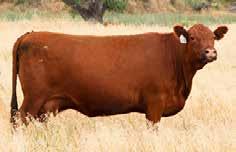




Create Your Profitable Future with Montana Red Angus Genetics!

2023 Production Sales
Feb. 4 ....................... TJS Red Angus, Buffalo, WY
Feb. 14-19 ................ Forster Red Angus (Online Sale), Richardton, ND
March 1 Lost Creek Red Angus (Private Treaty), Molt, MT
March 3 Sutherlin Red Angus, Stevensville, MT
March 4 Redland Red Angus, Hysham, MT
March 7.................... Sandhill Red Angus, Sidney, MT
March 8.................... Heart River Red Angus, Belfield, ND
March 9 Fritz Red Angus, Brady, MT
March 10 Leland Red Angus, Sidney, MT
March 11 Lucht Red Angus, Bozeman, MT
March 13.................. Feddes/C-T Red Angus, Manhattan, MT
March 14.................. Loosli Red Angus, Ashton, ID
March 15 Klompien Red Angus & CK Red Angus, Manhattan, MT
March 17 Laubach Red Angus, Big Timber, MT
March 18 Milk Creek Reds, Plevna, MT
March 21.................. Green Mountain Red Angus, Logan, MT
March 22.................. Westphal Red Angus, Grass Range, MT
March 23 Martin Red Angus, Glasgow, MT
March 25 Fischer Red Angus, Harlowton, MT
March 30 Gibbs Red Angus, Glasgow, MT
March 30.................. Northern Lites, Glasgow, MT
April 1 ...................... Spear J Red Angus, Jordan, MT
April 14 5L Red Angus, Sheridan, MT
May 11 Koenig Red Angus, Glasgow, MT
Dec. 1 ...................... Angelo Cattle Co. (Private Treaty), Drummond, MT
Dec. 6 ...................... Big Sky Elite Female Sale, Logan, MT
Dec. 15 .................... 5L Red Angus, Sheridan, MT


The Perfect Mating
by Lindsay Upperman, Beef Geneticist
Every year when the month of February comes around, relationships seem to come into focus. For cattle producers, the next calf crop is already processing, but mating decisions for the following calf crop may not be set in stone yet. As producers look to the next set of matings, the perfect match is the ultimate prize. Or better yet, the perfect sire to match the herd of females is the paramount prize. Yet, is the perfect sire or perfect match out there, or is it just a tall tale?
Let’s start at the beginning. A calf inherits 50% of its genes from its sire and 50% from its dam. Each sperm or egg produced by a sire or dam is a random sample of that parent’s chromosomes and genes. Now, if we consider that cattle have 30 chromosomes, that means that each sperm or egg produced is 30 flips of a coin. This equates to more than 1 billion possible combinations of the sire and dam’s chromosomes! In other words, with billions of possible combinations, the chances are rare that a given parent would have two sperm or two eggs that are exactly the same.
Looking at families throughout your community, this is easily shown. For instance, two siblings could effortlessly be identified to be from the same family, while another set of siblings could not be more different from one another. Maybe it’s hair color, height or even nose shape, but there are both similarities and differences due to those genes which are shared or not shared between siblings.
Usually, siblings share 50% of their DNA on average, but this can vary between 40% to 60%. As cattle have genomes similar in size to humans, the distribution of shared genes in cattle is expected to be comparable.
Shown mathematically, the EPDs reported can be calculated as half of the sire’s breeding value (sire EPD) plus half of the dam’s breeding value (dam EPD) plus the Mendelian sampling term.
The Mendelian sampling term represents a calf’s difference from the average of the parent’s breeding value. This is due to the random sample of chromosomes and genes that the given progeny inherited from its parents.
Initially, when a calf is born, no data is collected yet, which is why the Mendelian sampling term is assumed to be zero and the reported EPD is the parent average. Like most parental-average EPDs, they are not precise (this is reported as EPD accuracy), due to the EPD calculations not having enough data to predict the genes inherited from the sire and dam. Yet, as data is collected on the calf and it eventually has progeny, the Mendelian sampling term is better estimated. Ultimately, this will increase EPD accuracy and either increase or decrease the reported EPD estimates of the calf.
A Quick Recap
A calf gets 50% of its DNA from the sire and 50% from the dam. As well, two siblings share 50% of their DNA. However, which chromosomes or genes are shared between parents and progeny or two full sibling progeny is unknown. Only when data is collected and turned in, can the EPD calculations become more precise due to having more knowledge of which genes were inherited from the parents.
Thus, the perfect match is out there! However, in order to know if the chosen mating or chosen sire for your herd is “perfect,” data has to be collected and turned in on the resulting progeny. Ideally, collecting and reporting every available data point on an animal would be great, although it’s understandable with associated costs or production restraints this may not be possible. Therefore, collecting as many data points as possible can still give an animal more precise EPD estimates than no data at all.
So, do you already have the perfect match? Ultimately, the answer to this question relies on you, as a producer. If you are collecting and submitting data, you should already have a good idea of how your calf crops are doing at market. If



























































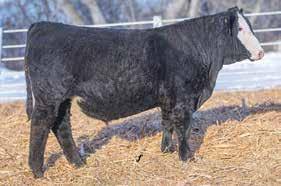









Successful Succession on a Multigenerational Montana Ranch
 by Macey Mueller, for the Red Angus Magazine
by Macey Mueller, for the Red Angus Magazine
This past October, for the first time in more than 130 years, Henry Gordon’s family found themselves hauling their livestock off summer grass rather than trailing them the 60 miles from the Canadian border back to their homeplace near Chinook, Montana. The parcels of land Gordon’s grandfather and father had purchased along the trail to rest livestock and “not infringe on the neighbors” were brown, and even with decades of improvements to the water sources, the reservoirs were dry.
“We typically average 12 to 15 inches of rainfall up there, but the last two years it’s been down to almost none,” Gordon said. “It doesn’t seem to take much moisture to get the grass growing and sustainable in that short-grass country, but we barely had enough to make it this summer.”
Like many ranchers, Gordon is no stranger to overcoming difficult times. When a similar drought struck in the 1980s, he and his family used the opportunity to build pits at the bottom of their reservoirs to increase capacity. Going further back, when labor became scarce in the 1970s, the family transitioned their ranch from sheep to cattle to remain viable.
More recently, Gordon has faced a different type of adversity. After suffering a series of debilitating accidents in the past decade requiring hospitalizations and intensive rehab, he made the decision to pass the reins of Gordon Cattle Co. to his oldest daughter, Trisha Gruszie, who has been on the ranch full time since 1997.
“After college, Trisha wanted to return to the ranch because she loves the work and she knows it’s the best place to raise a family,” Gordon said. “You have to be a very special person to be a rancher, and I’m really proud of the way she has grown into the role and continued our family’s ranching heritage.”
In her transition to taking over the ranch, Gruszie has realized how fortunate she is to still be working side by side with her father.
“I hate to say it, but my dad getting hurt and me being forced to prove to him that I could handle the responsibility – and him being forced to accept that he couldn’t be in on all the action – was probably the best thing that happened to our ranch and our relationship,” she said. “I see so many places where they lose that main person quickly and don’t have the ability to bounce ideas or pass down that knowledge.”

Successful Succession on a Multigenerational Montana Ranch
While Gordon Cattle Co. was formally incorporated in 1972 by Gordon and his parents, Kenneth and Loretta, the family enjoys a long legacy of ranching on the northern foothills of the Bear Paw Mountains dating back to 1889.
The original cattle herd consisted of Herefords and eventually included Shorthorns to help with pigmentation and milking ability. By the early 1990s, Gordon began to see some staleness in his fed cattle and decided to add Red Angus genetics to freshen carcass quality.
It wasn’t long before both Gordon and Gruszie fell in love with the breed, especially their docile disposition, and have continued to buy Red Angus bulls and transition their 1,300-head herd for nearly the past 30 years.
Gordon Cattle Co. markets most of their steers through Northern Livestock Video Auction and recently enrolled their calves in the Red Angus Feeder Calf Certification Program to provide age, source and genetic verification through IMI Global.
“I really do believe the Red Angus Association is working for us producers, and FCCP is a good example of a value-added opportunity they’ve developed,” Gruszie said. “I watch lots on a Northern sale come across the screen with the FCCP emblem, and I really believe it makes a difference to many buyers.

Three generations of the Gordon-Gruszie family have earned the American FFA Degree, including Trisha (Gordon) Gruszie, Alyssa Gruszie and Henry Gordon, and the organization has played a pivotal role in each of their lives.

“It’s just proof that we are trying to produce something that has specifications, that we have followed a certain program and that we’re going the extra mile.”
The ranch has traditionally retained their own females, but Gruszie has plans to start selling the heifers bred in the third cycle, giving her a chance to tighten her calving window and develop an additional income stream for the operation.




Successful Succession on a Multigenerational Montana Ranch

“We start calving heifers March 15, which makes our third cycle heifers ideal for many of the producers in this area who start later than us,” she said.
“I’m hoping I can get a little more unified herd and maybe build a reputation that makes those heifers sought after like we’ve seen with our steers over the years.”
Calving those heifers each March and April had been a longtime passion for Gruszie, who especially enjoys the solitude of the night shift.
“The phone doesn’t ring, nobody’s awake and I can set up my sewing machine to quilt in between checks,” she said.
More recently, Gruszie has conceded her nightly duties to two vital Gordon Cattle Co. employees – brothers Carmelo and Adrian – who are seasonal workers from northeastern Mexico. Carmelo’s son, Tony, rounds out the crew after calving season.
“Between dad’s accidents and the hardships we’ve faced from Mother Nature, we could not have made it through without those three,” she said.
“They have really grown to be part of our family, and they have developed into pretty handy cowboys along the way.”
Additionally, Gruszie, and her husband, Allen, have worked to instill a pride of ownership and heritage in their children. Three of their four kids are active on the ranch and helped initiate the family’s venture into registered Red Angus cattle.
“The kids sold their sheep flock to buy their first registered Red Angus heifers at the Northern International Livestock Expo in Billings,” she said. “Between the three of them, they have 28 registered cows and have sold a couple of bulls, including the six Gordon Cattle Co. bought last year when, at last minute, we didn’t have enough going into breeding season.”


Successful Succession on a Multigenerational Montana Ranch


Gordon Cattle Co. also recently added a few registered animals to their books. Gruszie said owning seedstock allows her to access the breed’s REDSPro online resource where she can indicate the reasons animals are culled from the herd and help identify undesirable traits in specific bloodlines.
“In the past, it’s been frustrating to have problematic bulls that we have to get rid of but not be able to document those reasons anywhere,” she said. “With access to REDSPro, I can now go in and give those bulls a code for why they’re no longer with me and really help better the breed.”
The family has also been active in the Junior Red Angus program, and Gruszie was recently selected to participate in the Red Angus Learn from the Best program, which is designed to equip and empower the breed’s newer seedstock operators.
With a new generation on board and several opportunities on the horizon, Gruszie admits it’s an exciting time at Gordon Cattle Co., but her enthusiasm is quickly tempered by the challenges presented by the ongoing drought.
“I’m scared to death right now of what the future holds,” she said. “Dad says we always seem to make it through, but I haven’t ever seen dire conditions quite like this.
“Dad has also always told me that in order to succeed, you’ve got to have a banker, a lawyer and an accountant on your team, but going forward, I think we need to add Mother Nature into that mix. Unfortunately, she’s the most unpredictable.” //








































































1AR00982 5L 9 MILE RESONATE 1113
Reg#: 4558479 // Bieber CL Energize F121 x 9 Mile Franchise 6305
1AR00981 C-BAR COLLATERAL 203J

Reg#: 4534315 // Lacy Collusion 115F x 9 Mile Franchise 6305




Anchored by the world-famous Stony cow family, Collateral has the makings of a next-level calving-ease sire. This deep-bodied, powerfully constructed sire is dark cherry red, good footed and has a herd sire presence about him.
Resonate offers outstanding genetic merit coupled with tremendous phenotype. His striking design, perfect structure and robust design make Resonate one of the most intriguing red bulls.


1AR00977 9 MILE ENTERPRISE 8180
Reg#: 3968850 // 9 Mile Franchise 6305 x GMRA Deuces 2222
If you like big-bodied, easy-fleshing, extremely sound and free-moving cattle, then Enterprise warrants serious consideration. Capturing the style and pizazz of his sire and the body capacity and power of his dam, Enterprise is a powerful combination of genetic excellence.
 Watch Video
Watch Video
Watch Video
Watch Video






BD: 3/10/22 3/4 SM 1/4 AR ASA #4102839














RSF Bulletproof B42 x TNT D131 (TNT Whisky River B298)



















Bieber



CL



Bulls Purebred Black Sim 3/4, 1/2 & 1/4















BD: 3/11/22 1/8 SM 7/8 AR ASA #4102882
BD: 3/15/22 PB AR ASA# 4105910
Supthin’s Out In Front 6699 x TNT F225 (LMG Gills Indeed 4736)

BD: 3/16/22 1/2 SM 1/4 AN 1/4 AR ASA #4102900












RSF Bulletproof B42 x TNT E565 (TNT Defiant C237)





Contact
and DVAuction.com

Make the Connection
by Leah Evans, JRA BoardIt all starts with a connection.
We all make connections somewhere. It might be with a newborn calf, a show heifer or even those gentle old cows that graze our pastures.
So, if we can make connections with cattle, we can make connections with people. Making the connections now will pay off in the long run.
So, have you made a connection with someone?
When I was in college, I completed an internship and made a strong connection with not just the company, but with the people I worked with over the summer. Since I built such a strong connection with the people, I ended up going back to the company and now work full time in the parts department.
Here are six ways that have helped me build connections.
1. Be your authentic self
You can’t go wrong with being your-
Engage with JRA!
Emma Ahrendsen, Iowa • jraemma@gmail.com
Peri Andras, Illinois • jraperi17@gmail.com
Leah Evans, Iowa • jraleah1@gmail.com
Natalie Evans, Illinois • jranatalie@gmail.com
self. Pretending to be someone you aren’t can lead your relationships to be built on lies and cause confusion in the future. People make mistakes when they desperately want to fit in, but they forget that being yourself is how you make genuine connections.
2. Stay focused on the present
If you’re having a conversation with someone, your focus should be on them. You shouldn’t be looking at your phone or thinking about what you want for dinner. One of the best ways to learn how to connect with other people is learning to be present.
3. Be genuine with your admiration
Actively showing your appreciation for someone can put a smile on their face. You may even think that showering someone with admiration is a good foundation for a deeper connection. Compliments that were given without sincerity, however, are likely to make someone distrust you.
4. Be a good listener
Actively listening to people when they speak can tell you a lot about them. Think about how your conversations usually go with people: Do you interrupt their sentences? Are you judging
them as they speak? Listening with an open mind lets you know them better. You also won’t need to ask them the same question twice or have them repeat themselves.
5. Maintain eye contact
Eye contact is one of the easiest ways to show someone you’re interested in what they have to say. Being attentive in this way will help the other person see you want to build a deeper relationship with them.
6. Offer a smile
The person you’re conversing with could be nervous or have social anxiety. Offering them a smile when you greet them or as the conversation progresses shows that you’re having a good time. It can also reduce stress and awkwardness for both of you. A smile initiates more positivity and makes people feel comfortable enough to open up more.
I am forever thankful for the connections I have made over the years!
I challenge you to make a connection with someone. It may be hard at first but in life we rely on people to help us out! It all starts with a connection! //
Cameron Ison, Kentucky • jracameron1@gmail.com
Mitchell VanderWal, South Dakota • jramitchell1@gmail.com
Kim Heller, Junior Program Coordinator • juniors@redangus.org

Save the Dates:
February 15 – College Scholarship Applications Due May 1 – JRA Board of Director Applications Due July 11-16 – Junior Red Angus Round-Up, Florida

Website: redangus.org/jra
Facebook: juniorredangus
Instagram: juniorredangus
Snapchat: juniorredangus
Common Hashtags: #jra




























U2Q PRESIDENT 64H x RREDS PRIMROSE F835 Maternal brother to Blueprint, highest performance bull on test.

S A V





Watch for updates on Facebook at Rhodes Red Angus.







The bulls are developed to last and they are culled extensively for convenience traits - teat size, maternal instinct, production, fertility and fleshing ability. Plus, we guarantee disposition.




 RREDS BLUEPRINT K201 #4681121
RREDS BLUE PRINT H001 x RREDS LAKOTA H081 One of the more complete heifer bulls to sell this season.
RREDS MR LET’S ROLL 229 #4642703 BIEBER LET’S ROLL B563 x AHF LAKOTA 837U An excellent balanced bull – shape, breed character, maternal power.
RREDS TOWNSHIP K239 #4681013 RED U2 TOWNSHIP 17G x RREDS ENHANTRESS G955 Heavy muscled and moderate, but as thick and sound as any.
RREDS PRESIDENT 64H K2153 #4680981
RREDS PATHFINDER K254 #4680999
RREDS PATHFINDER F811 x RREDS ANASCO F820 Bred for balance and longevity.
RREDS ROY ROGERS K218 #4681007
ROY ROGERS 0863 x RREDA MISS NORSEMAN G9106 Cow maker, a favorite all summer.
RREDS COLEMAN MARSHALL K2132 #4686365 COLEMAN MARSHALL 7170 x STRA PRIMROSE 530 A Coleman Marshall out of Blueprint’s granddam, bred to leave lasting daughters.
RREDS BLUEPRINT K201 #4681121
RREDS BLUE PRINT H001 x RREDS LAKOTA H081 One of the more complete heifer bulls to sell this season.
RREDS MR LET’S ROLL 229 #4642703 BIEBER LET’S ROLL B563 x AHF LAKOTA 837U An excellent balanced bull – shape, breed character, maternal power.
RREDS TOWNSHIP K239 #4681013 RED U2 TOWNSHIP 17G x RREDS ENHANTRESS G955 Heavy muscled and moderate, but as thick and sound as any.
RREDS PRESIDENT 64H K2153 #4680981
RREDS PATHFINDER K254 #4680999
RREDS PATHFINDER F811 x RREDS ANASCO F820 Bred for balance and longevity.
RREDS ROY ROGERS K218 #4681007
ROY ROGERS 0863 x RREDA MISS NORSEMAN G9106 Cow maker, a favorite all summer.
RREDS COLEMAN MARSHALL K2132 #4686365 COLEMAN MARSHALL 7170 x STRA PRIMROSE 530 A Coleman Marshall out of Blueprint’s granddam, bred to leave lasting daughters.















































Programming Profitability
 by Teres Lambert for the Red Angus Magazine
by Teres Lambert for the Red Angus Magazine
While some people maintain that “knowledge is power,” others will point out that knowledge is not power. Instead, the ability to act on knowledge is power. Such is the case when it comes to fetal programming, also known as developmental programming.
Knowing what fetal programming is – a concept that the in-utero environment during critical periods of fetal development affects the offspring throughout its lifetime – is one thing. Implementing fetal programming, and using it to your advantage, is another thing.
Producers who take a fetal programming approach make cow-calf nutrition a priority starting the first day a cow is bred and continuing until a calf is born. The nutrition the tiny fetus needs is taken into account so the fetus can develop optimally, express normal patterns of organ and tissue development and ultimately have a positive impact on the calf’s performance at birth and throughout its lifetime.
Research indicates that, when fetal programming is employed, calves are given their best chance of success from start to finish while optimizing their genetic potential.
From Human Health Studies to the Beef Industry


The beef industry’s fetal programming concept traces to human health studies first conducted in 1995 by Dr. David Barker, University of Southampton, Southampton, England. Focused on undernourished women and their offspring in Nazi-occupied Holland during World War II,
Barker investigated the relationship of maternal stresses to infant weight and physical characteristics at birth and later, health status. His work found that certain events occurring during critical points of pregnancy may cause permanent effects on the fetus and the infant long after birth.
Spurred by Barker’s findings relating to humans, animal scientists began investigating if maternal stimuli during a cow’s pregnancy could affect fetal development as well as post-natal growth and health. Production traits important to the economic viability of beef cattle operations that have been studied include calf survivability, growth, reproduction, health, muscle and fat development and carcass characteristics.
While some studies started with the focus on fetal development, other findings came to light by chance or when the focus shifted to how findings related to fetal programming. Such was the case of work undertaken by Rick Funston, Ph.D., beef cattle reproductive physiologist, University of Nebraska.







Programming Profitability What’s Happening in Utero:
Within the first 30 days of conception, an embryo floats freely in uterine milk in the uterine cavity where it is developing limbs and vital organs such as the heart, pancreas, liver, lungs, adrenals, thyroid, spleen, brain, thymus and kidney. The respiratory, nervous, digestive, circulatory and reproductive systems are also being formed.
When the embryo is approximately 38 days old, the fetus period begins. During this stage, development of the placenta and a vascular system takes place, providing transfer of nutrients and waste materials for the developing fetus.
By day 45 of the pregnancy, testicles of male calves are developing. At 50 to 60 days, ovaries of female calves begin development. During the first two months of pregnancy, primary myofibers – or muscle cells – are formed.
By nine weeks, the fetus has grown to about three inches long. Secondary skeletal muscle fibers are starting to develop and will continue to develop until approximately eight months of gestation.
At about three months, the fetus is approximately 5-1/2 inches long. Growth is occurring very quickly, with the organs, digestive system and immune system continuing to develop. The fetus’ four stomachs and hooves are distinguishable.
Six months after conception, the fetus is about 18 inches long. While the fetus is continually developing and growing throughout gestation, approximately 75% of its weight gain and growth occur from here forward.
As the female enters her ninth month of pregnancy, the calf is about 3 feet long. Its body is covered with hair, and final development of its lungs is taking place. Deposition of brown fat is completed – accounting for 2% of the live birth weight of the calf. //
Knowing that factors such as forage quality and quantity, cow condition, production goals, labor availability and cost influence nutritional management, Funston and two other researchers were looking at ways to decrease input cost, and one way was to look at winter grazing. But looking at their research results through a different lens, they discovered a fetal programming connection.
What Research Shows

“The findings that we ran into related to fetal programming were purely incidental,” Funston stated, “but important findings.
“The work shows that a producer’s management strategies not only influence the cow but the profitability of the calf she is carrying.”
When Funston and his colleagues evaluated the effect of dam nutrition on the growth and reproduction of those dams’ heifer calves, they found that 93% of the heifer calves from cows supplemented during the last trimester became pregnant overall versus 80% of the heifers out of dams receiving no supplementation.
In addition, 77% of the heifers from supplemented cows calved in the first 21 days of the season compared to 49% of those from non-supplemented dams.
Heifers from dams receiving supplement also had fewer calving problems: 78% unassisted versus 64%. In the same vein, actual and adjusted weaning weights and weights at pregnancy were higher for calves out of supplemented cows.
An associated three-year study showed that cows receiving protein supplementation weaned 5% to 9% more calves than cows not receiving supplementation.
Another finding was cows that were not supplemented not only had lower body condition but their steer offspring had lower carcass weights and their heifer offspring were less fertile.
Research by Robert Cushman, Ph.D., Nutrition and Environmental Management Research Unit, Clay Center, Nebraska, found that “maternal nutritional and hormonal treatments during gestation altered sperm quality, testicular development and the onset of puberty in bull progeny.”
“The work shows that a producer’s management strategies not only influence the cow but the profitability of the calf she is carrying.”









Programming Profitability



When the cows involved in this study were provided low protein intake around the time of conception, their male progeny had a delay in attainment of puberty as well as decreased sperm quality.

“What is apparent from these studies is that the growth and composition of the testes can be influenced during fetal development,” noted Cushman in a paper published in 2019 in Veterinary Clinics: Food Animal Practice.
Bottom Line





Because of its impact on fetal growth and development, and a calf’s lifetime ability to optimize its genetic potential, dam nutrition is a critical control point from conception to birth. That said, Funston maintained that most cattle producers have a good handle on this, particularly if they are managing body condition.


“The likelihood of nutritional challenge is not going to be in the first trimester when a herd is on decent grass,” he stated. “If I had to pick the most critical period of dam nutrition, it would be the last trimester. This is when the greatest fetal growth occurs and when dam nutrition helps the dam to breed back in a timely fashion.
“Keep in mind that while grazing dormant pasture can minimize production costs significantly, it can also affect cow maintenance, fetal development and future calf performance. Targeting supplementation to critical physiologic periods may provide an opportunity to reduce production costs and positively affect developmental programming.”
















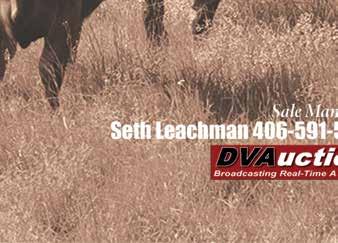























Chappell Meatmarket K454
(Reg # 4580953)

Chappell Monopoly K473
(Reg # 4609493)
Chappell Driven K453
(Reg # 4580941)
Chappell Midnight Sky K471
(Reg # 4580935) GM ATOMIC SKY 904 x VANWYE PRIDE 340
Chappell Complete KE1
(Reg # 4580955)

KJL/CLZB COMPLETE x CHAPPELL MISS LIBERTY D342
Chappell 9 Ball K457
(Reg # 4580947)
9 MILE FRANCHISE 6305 x CHAPPELL ZARA H408
for pictures, videos and future updates
HEIFER
SELLING 65 AGE ADVANTAGE RED ANGUS BULLS, 40 REGISTERED OPEN HEIFERS, 20 REGISTERED BRED COWS


ANNUAL BU LL AND FE MAL


BULLS & FEMALES LIKE THESE SELL!
SCHWEITZER RED ANGUS






Be Careful of Nutritive Value When Feeding Old Hay
byAccording to the U.S. drought monitor, approximately 40 states are experiencing drought on some level, which has also affected feed production in those states. With few reasonably priced feed options available, many cattle producers are looking at what they already have for feed resources, including hay that may be older from previous years. However, there are risks involved in feeding older hay, especially if that hay is moldy.
Keeping cattle at adequate body condition is the name of the game and should be monitored regularly. Cows should be ranked at a body condition score of 5, and heifers should be at a 6.

Nutrition is Essential
How well hay has aged depends on how well it was stored. Scott Fritz, Ph.D., clinical assistant professor of toxicology, Kansas State University, stated that if bales are wrapped tightly, they are most likely going to shed water fairly well.

“Moisture is the biggest enemy,” Fritz said. “I recommend doing nutritive analysis on any older hay to identify nutritional quality.”
As hay ages, microbial fermentation occurs within the plants, depleting the
soluble carbohydrates that are available, according to Phillip Lancaster, Ph.D., clinical assistant professor, Kansas State University.



“We’re left with a higher proportion of the plant cell wall, so the overall digestibility of the forage is lower than if it was freshly cut hay,” Lancaster said. “It deteriorates slowly from day one, and although it’s a relatively slow process, hay that is over a year old is going to be somewhat depleted.”
Hay that is two years old or more probably has no soluble carbohydrates left and really only provides the structural part of the cell wall, which still offers energy to cattle, but it is not nearly as effective. Alfalfa is worse than grass hay when it comes to losing soluble carbohydrates, because it has a higher lignin content, so the plant cell wall that is leftover is a lot less digestible than grass hay.
“That means that a producer is going to have to supplement with additional feeds to make up for that,” Lancaster added. “They can supplement addi-
tional wheat midds, soyhulls, distillers grains or other additional energy sources that also provide a high source of fiber.”
The best way for cattlemen to determine digestibility of hay is to send samples for chemical analysis.
The good news is that protein content seems to stay about the same, although the type of protein may change forms.
One of the main nutrients that is transferred to cattle through hay is beta carotene, which Lancaster said can be deteriorated by ultraviolet light if hay has been stored outside for a couple of years.
“If the hay is brown all the way through the bale and weathered, then it probably has very little vitamin A potential left,” Lancaster said.


Be Careful of Nutritive Value When Feeding Old Hay
Vitamin A is essential to cattle for tissue integrity in the digestive and reproductive tracts, according to Bob Larson, Ph.D., professor of production medicine, Kansas State University.
“We can see poor reproductive performance with vitamin A insufficiency,” Larson said. “Lung health, gut health and reproductive tract health all require vitamin A.”
Green grass or hay are typically good sources of vitamin A for cattle, and cows can store vitamin A in their liver for a while, but it depletes over time.
“Hay will lose beta carotene as it cures, and if you feed poor quality forages, there is a decrease in vitamin A,” Larson added.
“Older hay will also be less digestible which can decrease the daily consumption of important minerals like calcium and phosphorus.”
Minerals leach out of hay if it has been sitting outside and exposed to rain and snow.
“Vitamins D and E are less susceptible to ultraviolet light, but the amounts available to cattle decrease,” Lancaster explained.
Abortion Concerns with Moldy Hay
Feeding moldy hay is not safe, Fritz insisted.
“Typically, it would only affect a few cows, but we still recommend trying to avoid feeding hay with visible mold on it,” suggested Larson.
“The temptation is to try to dilute it if you have to, but the safest recommendation is not to feed it at all.”
Spring calving cows that eat moldy hay in the later part of pregnancy are at risk of abortion, and it does not matter if the mold is white or black.
“There is no differentiation in aspergillus, the species of mold that causes abortions,” Larson said. “If you are not sure about old hay, you may want to have it analyzed again or assume that you will need to supplement more than usual with those feed sources.”
If you have never forage tested hay before, Larson recommended to do so this year. Testing hay samples typically costs about $25 per sample, and your local Extension agent can help locate a lab near you.
“Hay was put up in different conditions, and many producers have feedstuffs that are different than what they are used to,” Larson explained. “It’s important to know if you need to balance the nutrient profile in the hay with supplementation.”
Be Efficient
Efficiently feeding the hay you have available can be a key to stretching
Bales that are tightly wrapped are more likely to shed water well, helping to preserve the quality of carry-over hay.


Be Careful of Nutritive Value When Feeding Old Hay

beef cattle diets, according to information from the University of Minnesota. Avoiding waste means losing less money in the long run.


One way to be more efficient when feeding hay is to feed hay that has been stored outdoors first, saving those bales that are already stored inside. If you end up buying hay, you can ask the seller if they will store your hay inside until you take delivery of it.
Round bale feeders allow cattle to waste up to 25% of hay. That waste can be cut to 10% if cattle are only offered access to the round bale feeder for 8-12 hours a day in a 24-hour period. Cattle should have adequate space around the round bale feeder so all of them can eat at the same time.

Hay can be processed or mixed in such a way as to make it more homogeneous and less likely to have a hot spot, any poisonous plants or nitrates
that may harm cattle, said Steve Ensley, Ph.D., clinical veterinary toxicologist, Kansas State University.





Processing or grinding hay is the most efficient method of limit-feeding hay but rolling bales out on the frozen
ground is also an option for most cattle producers.


Hay rings should also be moved periodically so any unconsumed hay is distributed throughout the field as fertilizer. //

















Our



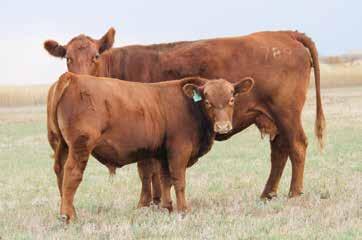






















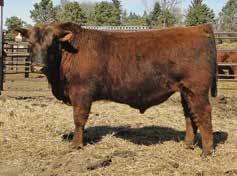
 Commercial Heifers
Commercial Heifers















Red Angus Reference Sires






Atomic C218 #3474996







Atomic H529 #4318895 DK Rolling H316 #4318791 DK Thunder H602 4318831 VGW Endurance 032 #4272761 Red U2Q Escobar 100H #4576677

Angus Reference Sires

Resource 1441 #17016597



Tahoe B767 #17817177

Dow Jones 0005 #19810625

Genetics: The Lifeblood of Civilization
by Nate Smith, General Manager, Top Dollar Angus, Inc.When most beef producers hear the word “genetics,” their minds go to EPDs which, at face value, is the most logical direction. While this reaction is understandable, it barely scratches the surface of the true power of genetics in all facets of agriculture and society. Let’s dive into this subject from the beginning.
From the first domestication of crops, such as wheat, millennia ago, the improvement of genetics was recognized as the only path to feed growing populations of tribe members and sustain humanity. We will circle back to these two key factors regularly, because they can’t be overstated. Producing wheat that was able to grow essentially anywhere sown allowed early humans the ability to stay in one place instead of chasing food sources like we sometimes do with heifers out on the highway.
How did our ancestors accomplish this? They kept records, they managed traits that were visually appraised and retained seed from the wheat that produced the most grain. You might call this approach a rudimentary form of EPDs.
Top Dollar Angus Team

Nate Smith, General Manager • (620) 546-4839 nate@topdollarangus.com
Kaytlin Hokanson • (307) 461-7687 kaytlin@topdollarangus.com
Andy Albrecht • (402) 922-1000 andy@topdollarangus.com
The same goes for livestock as well, since we produced more grain, we could more easily domesticate cattle, because we all know cattle are wired to come to feed. With feed being grown in one spot, and cattle located in close proximity, deciding who to keep and who to eat became easier – again basic genetic selection.


Genetic selection thousands of years ago mirrored what we genetically select for today, feeding a growing population. Crazy how some things never change! As record keeping improved, so did our ability to provide food security, which allowed for advancement in technologies that bettered our lives in innumerable ways. Hungry people are too busy looking for food to make new discoveries.
These new technological discoveries gave us the tools to move forward. During the Iron Age, we were able to expend more energy on making agriculture equipment to reduce the physical requirements of producing food. From plows to mitigate human input, to durable fencing to contain livestock, progress continued. All because we used genetic selection to ensure more people stayed fed.
In turn, those technologies supported by these advances assisted in the improvement of animal and crop management practices. The trend continued for centuries, compounding and magnifying with every generation of genetic selection.
It can be argued that to get to the place we are today, genetic management had to lead the charge, with better animal management playing a key role as well.


Agriculture quite literally makes the world function. It is a fact that every human needs food to survive. As the
population has grown in the 20th century, we have had to produce more food from the same or fewer resources. Very little new tillable land has been introduced in the last 50 years. So how did we do it? How have we kept a larger global population fed from the same number of acres and people? Improved genetics has been a huge part of the answer.
Today we look into the future of a growing population. In 11 years, we went from 7 billion mouths to feed daily to 8 billion today. We know that our world’s tillable land is unlikely to expand, and the U.S. beef industry is unlikely to grow cattle numbers dramatically for the very same reason.

So where do we come up with the solution to every farmer and rancher’s purpose of feeding humankind? Since we have maxed out resources, where do we turn in the future to ensure food security? Genetic improvement is the answer.
We know it has worked in the past. Without it we would still be in the Stone Age. We feed the world today with a small percentage of people engaged in agriculture and with limited numbers focused on genetics. Think about what we can do when genetics become the emphasis to increase food production. That will be truly exciting!
Feel free to reach out to me with any discussions on this topic. //

How to Enroll in FCCP and AA
1. The producer contacts the Red Angus Association of America at 940-477-4593 and answers a short supplier enrollment questionnaire over the phone. RAAA staff will ask general management, animal identification and breeding questions. If needed, the producer may be asked to supply additional documentation on breeding such as semen receipt, lease agreements or information on purchased females.
2. After all documentation is recorded, staff will ship the tags directly to the producer who must tag the calves before they leave the ranch of origin – birth, branding, preconditioning, weaning or before loading on the semi.
3. The producer will receive a customer enrollment agreement to fill out and return to RAAA with a copy of their calving records.
4. Staff will issue the USDAapproved Certificate of Compliance upon receiving the customer enrollment agreement and calving record.
FCCP Tags
99¢ each
Allied Access Tags
99¢ each
EID Combo Sets
$3 each
The Red Angus Feeder Calf Certification Program is the first step in differentiating your cattle to buyers, feedlots and packers. Experience industry-leading return on investment for just the cost of an ear tag – with no enrollment fees. The Red Angus Association of America Marketing Team offers assistance to Red Angus bull customers at no charge.

Visit RedAngus.org for contact information.
Red Angus Marketing
• FCCP (Yellow Tag)
• Allied Access (Green Tag)
• Premium Red Baldy (White Tag)
• American Red (Blue Tag)
• Tyson’s Choice+ Grid
• Greater Omaha’s G.O. Red Grid
• Stockyard
• Feedlot Partners
• Red Angus FeederFax
• Red Angus FeMail
• Calendar of Events


MLK CRK LAKOTA 2115 (#1518283)
Since 1985, Milk Creek Reds has STRIVED to produce functional, productive and profitable Red Angus cattle.







We identify real-world genetics by using large contemporary groups that consist of 15-60 progeny per sire. The large sire and contemporary groups allow us to evaluate the genetic merit within our operation.

Through this genetic selection we are producing economically sustainable females that THRIVE under limited inputs and generate offspring that are economic relevant in the feedlot and the rail.
CRK LAKOTA 064 (#1372025)
L297 MERCEDES 14X (#1389980)
MLK CRK BONNEBELL 316 (#1615259)








CRK EMUMAR 024 (#1372061)

The Importance of Colostrum
by Mark Z. Johnson, Oklahoma State University Extension as published on BeefMagazine.comBeing ready and prepared before the start of calving season can make life much easier for cow-calf producers and potentially save a calf. By the time calving season starts, you need everything on hand that might be necessary and all equipment and facilities in working order. Operators should have several doses of colostrum or colostrum replacer on inventory before the start of calving season.
Adequate colostrum intake is extremely crucial for newborn calves in order to gain passive immunity. Calves born after a prolonged delivery through the pelvic canal can suffer from severe respiratory acidosis. Such calves are less efficient at absorbing colostral immunoglobulins or antibodies even if artificially fed colostrum. The only disease protection baby calves will receive is from the passive transfer of antibodies from the colostrum they ingest. Colostrum also contains transferrin and lactoferrin, which bind iron and restrict bacterial growth. These factors, together with immunoglobulins, help limit growth of bacteria in the gut.
Colostrum or colostrum replacer will need to be administered by bottle suckling or tube feeding within a few hours of birth for maximal absorption of immunoglobulins. The general rule of thumb is the sooner colostrum is ingested the better and calves will typically stand, walk and nurse within one hour after birth. Bottomline: if there is any question of if a calf has received adequate colostrum, then colostrum should be administered immediately to the newborn. Calves that miss getting timely colostrum ingestion are much more likely to suffer from calf scours, which can have lifelong effects on general hardiness and disease resistance.
Previously obtained colostrum must be kept frozen to protect the integrity of the large protein molecules that make up the various immunoglobu-
Adequate and timely colostrum prevents nutritional deficiencies causing weak calf syndrome, from which calves often die within a few days of birth.
lins. Fresh colostrum can be stored in one-quart doses by putting that much in a gallon-size Ziploc bag. Lay the bags flat to freeze in the freezer. When the time comes to thaw the colostrum
body weight within the first six hours and repeat the feeding when the calf is about 12 hours old. For an 80-pound calf, this will equate to about 2 quarts of colostrum per feeding.

and feed it to the newborn calf, the “best practice” is to thaw in a warm water bath at 122 degrees Fahrenheit for one hour. Avoid thawing at room temperature or in a microwave oven.
The amount of immunoglobulin ingested is a major factor in final blood immunoglobulin concentration and disease protection. A practical rule-ofthumb is to feed 5% to 6% of the calf’s
Commercial colostrum replacers contain more than 100 grams of immunoglobulin per dose. Always read the label before purchasing. It is important not to confuse supplements and replacers. Supplements are used to boost antibody protection a calf gets from nursing and contain 40 to 60 grams of immunoglobulins, which is not enough to provide protection in a calf that has not nursed. //
“A practical rule-of-thumb is to feed 5% to 6% of the calf’s body weight within the first six hours and repeat the feeding when the calf is about 12 hours old.”
We practice selection and culling for traits that support efficiency and longevity within our environmental constraints of the Badlands in North Dakota. Cattle that excel in this setting can flourish just about anywhere else!



Annual Producti Sale

Wednesday, March 8, 2023
The Feedlot • Belfield, ND
Lunch 11:30 a.m. MT • Sale 1 p.m. MT
Tuesday, March 7 • The Feedlot
Prime Rib Supper • 6 p.m.
Selling:
45 Red Angus Yearling Bulls
70 Angus Yearling Bulls
10 Angus 2-Year-Old Bulls
Including a good selection of heifer-bull prospects.
Registered & Commercial Red Angus Heifers Available by Private Treaty





Buy with c fidence –




Our bulls are genomic tested, parent verified, carcass ultrasounded and fertility tested.

dedicati to producing quality p f mance ca le is a c tinuing c mitment to r cust s.


Tru w y outcross bloodlines in a B ced genetic package founded



















For 28 years, Kuhn’s Red Angus has been breeding for optimal balance in phenotypic and genotypic traits. We value the Red Angus female for her overall functionality in fertility, docility and mothering ability, and strive to bring you the best possible genetics by traveling throughout the nation looking for the outcross bloodlines that meet our criteria. Our goal is to give our customers a more complete bull!
Red Angus












Passing the Farm or Ranch to the Next Generation – Part One
by Heather Smith Thomas for the Red Angus MagazineOne of the challenges faced by farm and ranch families is how to gracefully and economically transfer the operation to the next generation. Many families put off making a will or figuring out an equitable transfer, especially when multiple heirs are involved, unsure how to do it without creating hard feelings within the family or leaving someone paying a lot of tax.

Dana Springer, CPA and partner, Wipfli LLP, in Havre, Montana, works with many clients to help facilitate generational transfers. “Some folks are reluctant because this is often an emotional process, but there are professionals who can help with those transitions,” she said.

Common Estate Tax Questions
“With current estate laws, most families don’t end up with a tax problem,” said Springer. For 2023 the estate tax exemption will go up to $12.92 million per person. For a married couple, it would be more than $26 million before there would be any federal estate tax.
Current tax law indicates that on Jan. 21, 2026, this exemption will go back down to about $6 million per person
unless Congress determines otherwise. “Tax laws could change before 2026. You might not have an estate tax problem today, but you might in the future,” she explained.
Before meeting with their accountant and attorney, people should know what their estate is worth. They don’t need to pay for an appraisal – they might have an idea of what land is selling for in their area, what their cows are worth, etc. “This can alter the direction they go, whether they might have an estate tax problem or not,” she said.
Grant Snell, with Crowley-Fleck Attorneys in Kalispell, Montana, advises clients in estate plans and said that if their estate is worth a lot they might want to make changes before 2026 –such as lifetime gifts – either directly to kids, or through special trusts that take advantage of the current high exemption.

There are also post-death options. “If there is an estate tax, heirs may elect to spread tax payments – possibly up to 10 years after the parents’ death – at a low interest rate. Then they
don’t have to come up with the whole payment within nine months of the death. If the parents didn’t do all the planning they could have done during life, the heirs can at least spread-out estate tax payments,” explained Snell.
If one parent dies ahead of the other, the surviving parent is the landowner until he or she dies. “When assets pass between spouses, there is a marital deduction – no estate tax due until the second one passes,” he added.
The surviving spouse may want to plan the kids’ inheritance.
“The surviving spouse should talk to an attorney soon; there are some elections available within nine months of death that they’d lose otherwise, including a disclaimer. If the surviving spouse doesn’t need certain assets, he/

Passing the Farm or Ranch to the Next Generation




she can use this disclaimer and those assets would pass through the surviving spouse directly to the kids and wouldn’t be included in the surviving spouse’s estate for estate tax purposes,” said Snell.
“Each spouse has their individual estate tax exemption, and sometimes it makes sense to use that exemption to fund a special by-pass trust or credit shelter trust on the first death. Then everything else above that can pass to the spouse,” he added.

“Sometimes there is benefit in doing that, but one of the drawbacks is when the credit shelter trust gets funded, the tax basis in property that goes into that trust will be whatever the property was worth at the first death. When someone dies, the property gets a stepup in the tax basis equal to fair market value at that time. Instead of funding one of those credit shelter trusts, sometimes we want all the assets to go
to the surviving spouse because then you get the marital deduction with no estate tax, and then the surviving spouse can do what’s called a portability election. They file an estate tax

return, and no tax is due, but it’s a way to have the surviving spouse say, ‘I want my deceased spouse’s estate tax exemption to be attached to me, going forward.’ Then when the surviving






Private Treaty Bu Sales
Passing
the
Farm or Ranch to the Next Generation


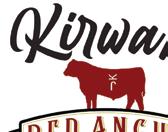



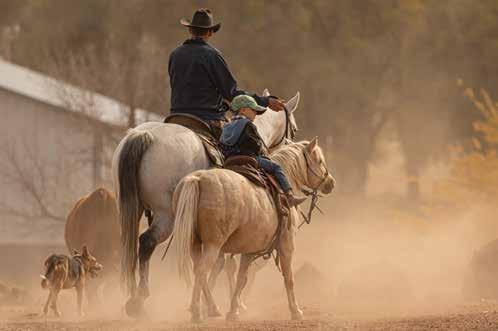
spouse dies, the deceased spouse’s exemption will be there,” he said.

This can be helpful, especially if one spouse dies young and the surviving spouse lives a long time. “The IRS recently said that while a typical estate tax return is due within nine months from date of death, if you are filing the return only to utilize the portability election, you have five years from the date of death to do that. This can be insurance against future estate tax,” said Snell.
Gifting
Sires include:

Se ing Flushes on Donors:
Another option is gifting. Sometimes land values are so high that it’s hard for one child to try to buy out siblings even with seller financing. “The parents can make a lifetime gift of fractional interests of the entity – such as when the ranch has been put into an LLC,” said Snell. “When they do this, however, they must get appraisals every time they make a gift, but by giving a fractional interest in an LLC you get to leverage the gifting.”
Everyone gets a lifetime gift and an estate tax exemption. If you make a gift of more than $16,000 per year to someone, the amount over $16,000 will reduce the lifetime gift and estate tax exemption.
“By making lifetime gifts, you reduce the value of your taxable estate and future appreciation. Instead of giving cash to family members each year, clients make fractional gifts of their business entity, to reduce the total value of their estate and give kids more ownership; they can build ownership over time. This is something you can do with an entity like an LLC that you can’t do with a sole proprietorship,” Snell explained.
With estate tax exemptions high right now, more people are interested in making a big gift during their lifetime instead of waiting until they pass.
“There are pros and cons in doing that. By making the lifetime gift, when the parents die, the kids don’t get that step-up in basis. When you make a lifetime gift, the kids get your basis. The estate tax is 40% whereas capital gains tax – which is what the step-up in basis would address – is only 15% to 20%. Your advisors can crunch numbers and determine the best way to go. I have software that will run examples of different planning techniques so my clients can see how they work,” Snell said.
“There are pros and cons to gifting and to selling, including tax consequences,” said Springer. “Gifting can

Passing the Farm or Ranch to the Next Generation

give the kids more sense of ownership as they move into management. If there is an estate tax problem you can maximize current exemptions by doing gifts and remove future appreciation of those assets from your estate,” she added.
“If you gift your assets away while you are alive, heirs do not get the step-up in basis; they assume whatever your basis in those assets,” said Springer.
“If they do eventually sell, generally they’ll have a large tax, whereas if they wait to inherit land, there will be a step-up in basis to whatever the value is on the day you died. If they turn around and sell inherited assets, they will have zero tax. There are pros and cons to gifting, unique to each situation,” she explained.
Plan for What Happens to the Ranch Before You Die
Some people fear going into a nursing home and long-term care expenses and don’t want to lose the ranch. “This can be a valid concern, but not a reason to just gift everything away,” said Springer.
“You need to look at your other assets and what long-term care might cost – and how long you might be there –and if you can afford it with other as-
sets. You can only have $2,000 before Medicaid will pay for long-term care.”
If there is no federal estate tax problem, many people won’t bother to make a plan, but there are other reasons to plan – not only for who will inherit your assets but also for your transition. “This would cover what happens before you die. If you retire, it doesn’t mean you have to change ownership of land, but maybe just change management, such as passing on some responsibilities to the next generation,” Springer explained.
“It might be a combination of ownership and management. It’s different for every family.” There might be multiple children involved or just one, or a situation in which the ranch couple wants to completely retire or make a gradual transition.
Importance of a Will
“If the off-ranch kids know in advance what’s in their parents’ wills, it’s not a big surprise – there’s less chance
of hurt feelings and lawsuits,” said Springer. “You’ll invest time and money in transition planning, but if it prevents future fighting and lawsuits, it’s worth it.” A lawsuit can create long-term family rifts that are very costly – financially and emotionally.
Snell said having a conversation with the family is important, regarding plans and what to expect.
“Even if a plan is disappointing to a kid, he or she can deal with that with the parents while they are still alive, as opposed to surprises after their death. I encourage clients to discuss and communicate with their children and be as transparent as possible – for fewer conflicts on down the road,” he explained.
Sometimes it can be hard to get everyone on the same page, so it is important to make a plan while you are still alive. “Every state has a plan for when people die without a will; their assets will be distributed according to the state law,” said Springer. It is important to have a will, especially if there are multiple heirs.
Editor’s note: Part 2 of this important series will be featured in the March 2023 Red Angus Magazine. //
“If the off-ranch kids know in advance what’s in their parents’ wills, it’s not a big surprise – there’s less chance of hurt feelings and lawsuits.”
Honest communication with heirs may feel difficult but it creates transparency and fewer conflicts down the road.

The Rally research collaboration between RAAA and Neogen is designed to increase phenotypic data collection and submission for mature weights, body condition scores and genotypes on Red Angus females. Female genotype and phenotype information helps to improve genetic predictions and overall data on your Red Angus herd.


This is a really great opportunity to receive genotyping at a reduced rate.
REQUIREMENTS:
• Registered females only
• Must test 90% of females on active inventory

- Already genotyped females can count toward this 90%
• There is also no cap on herd size, as long as the 90% requirement is met, so this program is tailored to small and large producers



• Samples submitted for the Rally need to be TSUs (tissue)
BY PARTICIPATING IN THE RALLY YOU WILL RECEIVE:
• GGP100K (GGP-LD) testing for $22 (regularly $50)
- OS and MA testing can be added for $2/test; other defect testing is normal pricing
• $5 Age Rebate

- At completion of testing, you will receive a one-time reimbursement of $5 for females submitted that are 6+ years old (circa 2016)
• $5 Phenotype Rebate
- Submit both Mature Cow Weights (MCW) and Body Condition Scores (BCS) for a one-time reimbursement



- Must be on every cow that weans a calf that season
- Must be within a week of calf weaning date
- You don’t have to apply for the rebates if you don’t want to; these are just additional ways to save money!

Can Dogs Catch a Whiff of Bovine Respiratory Disease?
by Texas A&M AgriLifeA Texas A&M AgriLife researcher is taking a page out of human disease research to see if dogs might be able to sniff out bovine respiratory disease, BRD, one of the largest health challenges for the feedlot cattle industry.

Courtney Daigle, Ph.D., an animal welfare specialist in the Texas A&M Department of Animal Science in the Texas A&M College of Agriculture and Life Sciences, and her doctoral student, Aiden Juge, are beginning the second round of training to determine if dogs can routinely and accurately detect BRD in cattle.
She works with BRD expert John Richeson, Ph.D., from West Texas A&M University in Canyon, and dog training expert Nathan Hall, Ph.D., from Texas Tech University. Hall specializes in canine olfaction, otherwise known as a dog’s sense of smell, and Richeson supplied the first set of nasal swabs from cattle used in the pilot study.
The results of the team’s first study were recently published in two major journals: Canine olfaction as a disease detection technology: A systematic review in Applied Animal Behaviour Science, and Using Canine Olfaction to Detect Bovine Respiratory Disease: A Pilot Study in Frontiers in Veterinary Science.
Canine olfactory capacity has been successfully used to detect and diagnose human diseases, and this team is looking to expand that success. For BRD, Daigle said their pilot testing helped illuminate what training, equipment and other parameters are needed to increase the rate of accurate predictability.
Now the team is starting their second study, utilizing cattle at the Texas A&M McGregor Research Center in Central Texas and guard dogs from the prison in Huntsville.
Daigle said this technology could
revolutionize how antimicrobial treatment is applied in commercial beef production. Currently, cattle health is evaluated at the group level, resulting in mass administration of antimicrobials to an entire group, irrespective of individual animal health status.
• BRD is a leading worldwide cause of cattle morbidity and mortality due to the lack of reliable testing and limited vaccine efficacy.
• Cattle with BRD are challenging to identify and diagnose.
• The prevalence of BRD in U.S. feedlot cattle has been reported at 16.2%.
“We propose that appropriately trained dogs will accurately and rapidly predict BRD risk in individual cattle, and communicate that information to humans in real time, resulting in a targeted approach to controlling BRD using antimicrobials,” she said.
This research could catalyze a paradigm shift in how feed yards use antimicrobials. Producers will utilize the dogs’ superior olfactory system for chute-side disease detection.
“A well-trained dog and handler positioned near the chute creates a scenario where the dog can quickly and calmly evaluate restrained cattle and signal a diagnostic decision to the handler,” Daigle said. “Metaphylactic application would then transition from group application to implementation on an individual animal basis.”
Treating only the animals that the dogs indicate truly need intervention would reduce drug cost and use compared to the current methods. Additionally, this will demonstrate that the livestock industry is demonstrating improved antimicrobial stewardship and promoting cattle welfare, while providing the global population with high-quality protein.
The Pilot Study
Knowing that dogs can identify humans and animals affected by a variety of diseases based on scent, Daigle’s team set out to determine if the canines’ olfactory systems can distinguish between patterns of volatile organic compounds produced by healthy tissue versus tissue infected with BRD.
In the pilot study, two dogs were trained in a series of stages over seven

Can Dogs Catch a Whiff of Bovine Respiratory Disease?

months to discriminate between nasal swabs collected upon arrival at the feedlot from cattle that developed signs of BRD within 20 days and swabs from cattle that did not develop BRD signs within three months at the feedlot.
The two dogs were selected from the Department of Veterinary Pathobiology in the Texas A&M School of Veterinary Medicine and Biomedical Sciences. Nasal swabs were collected from 395 crossbred beef cattle at the West Texas A&M University Research Feedlot in Canyon between December 2020 and March 2021.
After sample collection, the cattle were monitored for three months. Samples were classified as positive if the source animal was treated for BRD at least three times or died after at least one treatment for BRD within 20 days of arrival.
Runnels, top, and Cheaps, lower, were trained over seven months to discriminate nasal swabs collected from cattle at the McGregor Research Station that developed bovine respiratory disease symptoms.
Use Red Choice to improve heifer development, increase marketing opportunities for Red Angus females and create reliable sources of high-quality replacement heifers for cattle producers.
Red Choice Requirements
• Heifers Enrolled in a Red Angus Value-Added Program


• Vaccination Protocol
• Pelvic Measurement/Tract Score
• Phenotypic Assessment
• Planned Mating to Eligible Sires
• Pregnancy Exam
Producers can put premium Red Choice females to work in their herd with the confidence these females have been managed and raised to the highest quality standards possible.
To learn more about Red Choice and how to enroll heifers,visit RedAngus.org.
SELLING 45 RED ANGUS BULLS AND A LARGE GROUP OF COMMERCIAL RED FEMALES




L83 Ranch is a family owned and operated Farm and Ranch that is focused and prideful in their pursuits within agriculture. Our focus on raising cattle to better the beef industry is at the heart of every decision we make. We raise Red Angus & Hereford seedstock that we feel is most suitable for our unforgiving and unpredictable environment here in the Northern Plains. This focus is specifically built around the commercial cattleman and what they need most. We have built a strong and functional cow herd that are implanted with hand selected genetics from across North America to provide cutting edge genetics to our fellow ranchers. As we look forward to an exciting upward shift for the beef business, we feel like the genetics we stand behind are going to keep our customers profitable and at the forefront. We are thankful for the connections, friendships, and family that we have gained throughout this industry over several generations, and we look forward to fostering these, along with new relationships, long into the future. -Ben Lodoen



Can Dogs Catch a Whiff of Bovine Respiratory Disease?
Results and Refinement
Daigle said in the pilot study, the results were just slightly above chance for the dogs sniffing out nasal swabs from positive-testing cattle.
Because of the complexity of BRD pathogenesis, if detection is reliant on a pathogen-specific odor, BRD may be more challenging than other diseases for dogs to detect, the team concluded.

In the pilot study, they determined that varying field conditions, seasons and sex scent differences may have influenced the overall outcome, thus limiting the accuracy with which BRD could be diagnosed.
Because of these uncertainties, conducting further research with increased control of sample quality, more precise timing of sample collection relative to sickness, and greater sample uniformity is needed, Daigle said.
Samples were placed in jars in three base stations and then the dogs were allowed to sniff them to see if they could detect any positive samples.
In this second round, two new dogs will be selected, and samples were taken from cattle that are homogenous in breed, sex and origin. The team collected both nasal and saliva samples to evaluate the impact of the sample type on detection accuracy.
“If these dogs can discriminate between samples from sick and healthy
cattle under highly controlled conditions, then producers could have another tool in their cattle-management toolbox when it comes to detecting BRD,” Daigle said. “Also, these results may catalyze further research that could examine what compounds are responsible for those scent differences, leading to the development of sensors for BRD.” //
Build a better cow herd with stronger selection tools
By testing commercial females, cattlemen can make improved selection decisions, targeting performance and herd-quality goals.
Red Navigator DNA test provides:
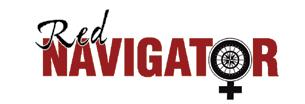
• Parentage (if sire is DNA tested)
• Genetic assessment (percentile rank) for each RAAA trait
• Most accurate results on commercial females that are 75% or more Red Angus

Take
1.
2. Collect samples: Blood or tissue samples required for testing.
3. Submit DNA samples and payment to RAAA.
4. Call the DNA department for your custom results timeline.
5. Receive personal consultation on the DNA results with a member of the RAAA staff member.
Position your ranch for profitability with Red Angus-sired calves.
BADLANDS RED ANGUS
Bill Ceynar • Arnegard, ND 701/586-3435 • 701/570-4578 badlandsredangus@gmail.com
BARENTHSEN-BULLINGER RED ANGUS
Mark & Kathy Barenthsen Jeremy & Jessica Bullinger Powers Lake, ND • bbredangus.com 701/464-5741 • 701/339-1834 701/464-4893 mkbar@nccray.com • jbullinger@nccray.net
BAUMAN RED ANGUS
Dave, Kathy, Wayde & Jake Bauman Linton, ND • bb.ranch@hotmail.com 701/336-7201 • 701/321-1994
BRADEMEYER FARMS
Mike Brademeyer • Verona, ND 701/742-2598 • 701/710-0445 kbrademeyer@drtel.net
BRENNER ANGUS
Sidney & Melva Brenner • Carson, ND 701/522-3335 • 701/471-9135 brennersmb@gmail.com
BROKEN HEART RANCH
Gary & Chad Pederson • Firesteel, SD 605/865-3190 • 605/850-9878 bhrredangus@lakotanetwork.com www.pedersonbhr.com
CAMPBELL RED ANGUS
Robert Campbell • McIntosh, SD 701/422-3721 • 605/845-4812 campbellra@westriv.com www.campbellredangus.com
CARGO STOCK FARM
Seth, Laci, Dylon, Preston, Ritch Cargo Arnegard, ND 701/586-3010 • 701/537-3320 cargostockfarm@gmail.com
DAHL LAND & CATTLE CO.
Jeff Dahl • Gackle, ND • 701/485-3762 jldahl@daktel.com • www.dahlcattle.com
DAHLKE RED ANGUS
Bryantt Bolduc /Arlan Dahkle Bagley, MN • dahlkeredangus.com 218/533-0259 • 218/556-5896 dahlkeranch@gvtel.com
DIAMOND C ND
Chase Furstenau • Cavalier, ND 701/520-0671 chasefurstenau@gmail.com www.diamondcnorthdakota.com
DK RED ANGUS
Scott Kueffler • Grenora, ND 701/694-3620 • 701/641-0519 redangus@nccray.com
DRY CREEK RANCH
Max and Haley Robison • Amidon, ND 406/461-3462 • 701/523-8285 haley@drycreekranchnd.com www.drycreekranchnd.com
FORSTER RED ANGUS
Kenneth Forster • Richardton, ND 701/974-2450 • 701/290-2450 forsterredangus@yahoo.com www.forsterredangus.com
GRASSY MEADOW RANCH
David & Karissa Daws Michigan, ND • 701/270-1524 grassymeadowranch@gmail.com
HEART RIVER RANCH
Chuck & Annette Steffan • Belfield, ND 701/575-8145 • 290-9745 • 260-4630 heartrivergenetics@yahoo.com www.heartrivergenetics.com
HUBER EY RED ANGUS
Bryan & Emmy Huber • Jud, ND 701/685-2687 • 701/320-8054 emmy@drtel.net • www.hubereyredangus.com
JACOBSON RED ANGUS
Gary & Val Jacobson • Hitterdal, MN 218/962-3360 • 701/361-3189 gjrangus@feltontel.net www.jacobsonredangus.com
KAL-KOTA RANCH
Ed Kalianoff • Steele, ND 701/475-2694 • 701/471-4006 kalkota@bektel.com
KOESTER RED ANGUS
Steve & Tracey Koester • Steele, ND 701/400-1611 • koester@bektel.com www.koesterredangus.com
KUHN’S RED ANGUS
James & Stephanie Kuhn • Napoleon, ND 701/332-6378 • 701/426-6921 kuhnsredangus.net
KUHNHENN RANCH
Shawn Kuhnhenn • Towner, ND 701/537-3229 • shawn.kuhnhenn@K12.nd.us
L83 RANCH
Ben Lodoen • Westhope, ND 701/201-0477 lodoencattle@gmail.com • lodoencattle.com
LARSON’S LOST RIVER LIVESTOCK
David Larson • Clearbrook, MN 218/766-3323
david.larson.lrl@gmail.com
www.lostriverlivestockmn.com
LAZY D RED ANGUS
John & Sara Berg / Cody Berg NW Williston, ND 701/826-4211 • 701/826-4231 701/570-9788 • 701/570-0730 lazydredangus@yahoo.com
LAZY J BAR RANCH
John & Stephanie Jung • Mina, SD 605/228-1743 • 605/380-1796 lazyjbarranch@yahoo.com www.lazyjbarranch.com
LELAND RED ANGUS
Melvin & Luella Leland
Todd & Carla Leland • Sidney, MT 701/565-2347 • 406/489-1466 lelandra@restel.net • lelandredangus.com
MISSOURI RIVER RED ANGUS
Blake & Whitney Wold • Watford City, ND 701/770-4105 missouririverredangus@gmail.com missouririverredangus.com
NAMKEN RED ANGUS
Jared Namken • Lake Norden, SD 605/881-3845 jarednamken@hotmail.com www.namkenredangus.com
NORDLUND STOCK FARMS LLC
Mike & Sam Norlund Clearbrook, MN • 701/799-0943 nordlundstockfarm@gvtel.com www.nordlundstockfarms.com
OHR RED ANGUS
Edward, Jeanne & Carl Olson • Argusville, ND 701/484-5779 • 701/238-3601 olsoncandc@aol.com
PRESSER RED ANGUS
Troy Presser • Turtle Lake, ND 701/447-2855 • 701/220-0189 tpresser@westriv.com
RESSLER LAND & CATTLE
Mark or Bryan Ressler • Binford, ND 701/789-0191 • 701/789-7294 contact@resslerlandandcattle.com www.resslerlandandcattle.com
Watch for more exciting events in North Dakota!
Feb. 7 Twedt Red Angus, Ranch, McHenry, ND
Feb. 14-19 Forster Red Angus, online
Feb. 14 Rhodes Red Angus, Ranch, Faulkton, SD
Feb. 15 Barenthsen-Bullinger Red Angus, Ranch, Powers Lake, ND
Feb. 16 OHR Red Angus, Ranch, Argusville, ND
Feb. 16 Wasem Red Angus, WIX Barn, Richardton, ND
Feb. 18 Nordlund Stock Farm, LLC, Ranch, Clearbrook, MN
Feb. 18 Lazy J Bar Ranch, Hub City, Aberdeen, SD
Feb. 19 Larson’s Lost River Livestock, Ranch, Clearbrook, MN
Feb. 20 Special Red Angus Feeder Calf Sale, Rugby Livestock Auction, Rugby, ND
Feb. 24 Brenner Angus, Kist Livestock, Mandan, ND
Feb. 26 Namken Red Angus, Ranch, Lake Norden, SD
Feb. 27 Lone Tree Red Angus, Ranch, Bison, SD
March 1 Broken Heart Ranch, Ranch, Firesteel, SD
March 4 DK Red Angus, Sitting Bull Auction, Williston, ND
March 4 Lewis Red Angus Ranch, Ranch, Edinburg, ND
March 6 Campbell Red Angus, Ranch, McIntosh, SD
March 8 Heart River Ranch, Feedlot, Belfield
March 10 Leland Red Angus & Koester Red Angus, Ranch, Sidney, MT
March 15 Klompien Red Angus, Veltkamp Feedlot, Manhattan, MT
ROHRICH’S CUTTING EDGE RANCH
Rick, Amber & Kaden Rohrich • Steele, ND 701/391-1911 • 701/934-4178 cuttingedgeranch@bektel.com
SCHRIEFER RANCH LLC
Marc, Jodi, Riley, Cheyenne & Cassi Schriefer • Golden Valley, ND 701/870-4292 • 701/879-2609 marcjodi@icloud.com schrieferredangus.com
SEEGER & RUSCH RED ANGUS
Brandon & Dixie Rusch • New Salem, ND 701/843-7191 • 701/226-5479 701/426-9443 ruschvet@gmail.com seeger-ruschredangus.com
SEVERANCE RED ANGUS
Brian & Mary Severance • Palermo, ND 701/862-3681 • 701/898-3681 redcows@restel.net
SPUR M RED ANGUS
Doug & Darcy McGee • Bowman, ND 701/523-3635 • 701/523-6086 ddmcgee@ndsupernet.com spurmredangus.com
TNT SIMMENTAL & RED ANGUS
Kevin & Lynette Thompson • Almont, ND 701/843-8454 • 701/391-1631 www.tntsimmentals.com
TURTLE RIVER CATTLE CO.
Ron & Ryan Clemetson • Grand Forks, ND 701/739-0639 • 701/739-6407 trreds@hotmail.com
TWEDT RED ANGUS
Sam Twedt • McHenry, ND 701/262-4768 • 701/388-4035 twedtredangus@hotmail.com www.twedtredangus.com
VALNES RANCH RED ANGUS Emit Valnes • Eden, SD 605/698-6596 • 605/228-8857 valnesranch@hotmail.com • valnesranch.com
WASEM RED ANGUS
Chris & Jolyn Wasem • Halliday, ND 701/938-8365 • 701/260-1513 jolyn.wasem@gmail.com wasemredangus.com
WEST BRANCH RANCH
Greg Bailey • Baldwin, ND 701/255-2424 • funditos2@gmail.com
ND Red Angus Association
President: Sam Twedt
Vice President: Bryan Ressler
Immediate Past Pres.: Scott Kueffler
Directors: Ryan Clemetson, Ben Lodoen, Rick Rohrich & Chris Wasem
Sec./Treas.: Chuck & Annette Steffan 701/290-9745 ndredangus.com
ndredangusassociation@gmail.com
In Memory
Brenton Ray Phillips
1959-2022
Brenton Ray Phillips
1959-2022
Brenton Ray Phillips, 63, of Selden, Kansas, passed away Dec. 2, 2022. He was born Aug. 5, 1959, in Colby, Kansas, to Norman Raleigh and Connie Phyllis (McIntyre) Phillips.

Brenton grew up in rural Decatur County and was a 1977 graduate of Golden Plains High School. He went on to attend one semester at Colby Community College. Brent married Diane Kay Voss on Sept. 10, 1988, in Selden, Kansas.
Brent was a rancher who had a deep-seeded passion for raising his livestock. He won the Red Angus Grid Master award multiple times. Brent made a living doing what he loved. He also enjoyed team roping and was able


to compete alongside both his sons, Clay and Lucas. Brent served as a director of Farm Credit of Western Kansas from 1995-2016. He enjoyed spending time and sharing his knowledge with his grandchildren, Brylee and Teagan, and was anxiously awaiting the arrival of his newest grandson. Brent was a family man with a tough exterior and a soft heart and was loved and will be greatly missed.
Brent is survived by his wife, Diane, of the home; children: Lucas (Kori) Phillips of Oberlin, Kansas, Clay (Taylor) Phillips of Alva, Oklahoma, and Tyler (Lindsay) Richardson of Pratt, Kansas; parents, Norman and Connie Phillips of Concord, Arkansas; sisters, Barbara (J.R.) McCaffree of Leon, Kansas, and Brenda (Steve) Smith of Wesson, Mississippi, and two grandchildren and one on the way.
Funeral services were held Dec. 7, 2022, at Christ Community Church in Hoxie, Kansas. Memorial contributions may be
made to Christ Community Church and sent in care of Pauls Funeral Home, 121 N. Penn Ave., Oberlin, Kansas, 67749. Condolences may be left at www.paulsfh.com. //
Birth Announcement
Riata Louise Woodruff
Nolan Woodfuff, RAAA commercial marketing specialist, and his wife, Kelly, welcomed their daughter, Riata Louise Woodruff, to their family on Oct. 10, 2022, at 3:23 a.m. and weighed 6 pounds and 14 ounces. //

Learn from the Best 2023 Participants Selected
Now in its third year, RAAA’s Learn from the Best program is designed to leverage the experience, knowledge and insights held by successful breeders and industry specialists to equip and empower participants to advance their own Red Angus seedstock operations. The program consists of nine sessions – eight virtual and one in-person – and utilizes both asynchronous and synchronous platforms to maximize learning and interaction with the presenters. The in-person session, held at the National Red Angus Convention, will serve as a capstone experience and provide an opportunity for face-to-face conversation with many of the successful breeders that shared what made their seedstock businesses successful during the online sessions.
The following RAAA members have been selected for the 2023 program:
• Brady & Kallena Allen, Brady Cattle Co., LLC – TX

• Cash Black, Black Diamond Ranch – AR
• Josh & Katie Camp, Camp’s Red Angus – GA
• Julie Evans, LCB Farms – IA
• Cody & Narlie Ewing, Oak Springs Farm – WV
• Trisha Gruszie, Gordon Cattle Co. –MT

• Heath Halley, Double H Red Angus –MO
• Andy & Alisa Hornung, Hornung Red Angus – WI
• John & Anita Kriese, Finger Lakes Cattle Co. – NY


• Toby & Trevyr Lester, TTL Livestock – AR

• Jacob & Katie Lipton, Pleasant View Farms – CT
• Robert & Charlotte Martin, Martin Ranch – OK
• Tom & Katie Morton, Green Mountain Red Angus – MT
• Jim Morton, Green Mountain Red Angus – MT
• Haley & Max Robison, Dry Creek Ranch – ND
• Kolby & Erica Shannon, Carrizo Creek Cattle – CO
• Jordan & Tim Wass, RNR Farms – PA
Kim Heller, Ph.D., RAAA director of education, said, “As we kick off this third cohort of Learn from the Best, we look forward to continuing to support the education of Young Red Angus breeders to help them become more successful and in developing a network of successful breeders they can use as a resource.”
For questions about Learn from the Best, contact Kim Heller at kim@redangus.org. //
Welcome to our Newest RAAA Members!
Area 1 –West
Director – George Murdock
AARS, INC.



STEVEN BERGIN
P. O. BOX 871545

WASILLA, AK 99687
ANEKA NIELSEN
3566 N. MARS AVENUE
PALMER, AK 99645
LAND RANCH
RYAN LAND
19920 KELLY DRIVE
SONORA, CA 95370
TAYLOR PECK
10 PORTERHOUSE DRIVE SAGLE, ID 83860
FAUST, LLC
ALEX FAUST
310 SUNSET SPRINGS LN SPARKS, NV 89441
TP CATTLE
TANNER PUGH
6500 RD K NE
MOSES LAKE, WA 98837
Area 2 – Montana
Director – Kay Klompien
MADISON BRIST PO BOX 853
KILA, MT 59920
JANA HERBST
8133 AMSTERDAM RD
MANHATTAN, MT 59741
KALLIE HERBST
8133 AMSTERDAM RD
MANHATTAN, MT 59741
KELLUM CARNAHAN
17457 COUNTY RD 34
JULESBURG, CO 80737
Area 3 – Rocky Mountain
Director – Aaron Kravig
GERARDO GUTIERREZ
14407 CR 18 1/2
FORT LUPTON, CO 80621
LC BRISTOL LAVOR BRISTOL
11087 W 4000 N PO BOX 601
BLUEBELL, UT 84007
Area 4 – Southwest
Director – Tony Ballinger
HEAVENSENT RANCH
JOHN BOONE 6726 BEAVER BEND RD. GILMER, TX 75645
TUFF DAVIS 17050 CO RD P
WHEELER, TX 79096
CN RANCH
FERNANDO LOYA 3609 CHARLES ST NORTH RICHLAND HILLS, TX 76180
MOHL RANCH
CJ MOHL 980 FM 269 SOUTH SALTILLO, TX 75478
RED MARTIN CATTLE
LANA PEUGH PO BOX 896 GODLEY, TX 76044
CHASAH RANCH, LLC
CRAIG ROEDER PO 9104
WICHITA FALLS, TX 76308
JOSIE SWICK 236 FM 46 BREMOND, TX 76629
KILYE WINGE 13601 INTERSTATE 20 CISCO, TX 76437
ROCKIN W RED ANGUS
TONY WORNICK 2334 COUNTY ROAD 1415 BONHAM, TX 75418
Area 5 – Northern Plains
Director – Stephanie Jung
PGC CATTLE
AUSTIN MOELLER
973 201ST STREET
PIPESTONE, MN 56164
JUSTIN AND KATIE EGGEN
JUSTIN EGGEN
2102 101ST AVE SW GLADSTONE, ND 58630
LYLA BOTHE
47765 219TH ST
AURORA, SD 57002
MOGCK CATTLE
JUSTIN MOGCK
40550 287TH ST TRIPP, SD 57376
JENNINGS PAZOUR
35074 257TH ST
PUKWANA, SD 57370



Area 6 – Great Plains Director – Jason Anderson
QUINN PREUSS
1344 16TH ROAD
HOME, KS 66438
ANDERSEN FARMS
LANE ANDERSEN
823 N BOXELDER ST
NORFOLK, NE 68701
AUTUMN DEETS
27390 GROVE RD PLEASANTON, NE 68866
AVA DEETS 27390 GROVE RD PLEASANTON, NE 68866
MASON GERDES 3805 W LITTLE SALT RD VALPARAISO, NE 68065
JALEE HAGGERTY 364 CARROLL AVE
SAINT PAUL, NE 68873
KAYLA RUPE 1125 HELDOR ST
RAGAN, NE 68969
ROGER & BARB WILSON 231 ROAD 321 TRUMBULL, NE 68980
LANE BOATNER
14260 N 270 RD
OKMULGEE, OK 74447
AVA BYRD
2803 W 104TH ST
PERKINS, OK 74059
KENNEDY DESBIEN
RT. 1 BOX 85B
TEXHOMA, OK 73949
GRACE FENTON PO BOX 129
STIGLER, OK 74462
BRYALE JOHNSON
2522 CORBIN LN CLINTON, OK 73601
ANNA KELSEY
1501 WEST HIGHLAND
TECUMSEH, OK 74873
TAYLOR OTTO 976 W FURGUSON PONCA CITY, OK 74601
MICHAEL PRITCHARD 35300 MOCCASIN TRAIL RD MCLOUD, OK 74851
Area 7 – Northeast Director – Rob Hess
LEVI WECHTER 1721 ROCHESTER RD LIGONIER, IN 46767
DARK STAR VENTURES, LLC


MATTHEW WALIGORA 7855 LESSITER RD NE BELDING, MI 48809
HANSON FARMS ANGUS
THOMAS HANSON
189 CLARKS CHAPEL ROAD NASSAU, NY 12123
DL GREENFIELDS LLC
JOHN QUINN
1427 ALBANY POST RD GARDINER, NY 12525
REAMER FARMS
TODD REAMER
100 MEL RD WEST NEWTON, PA 15089
Area 7 – Northeast Director – Rob Hess

4K RANCH
RICKY J KERN
660 WILLARDS MILL RD NELSON, VA 24580
Area 8 – Southeast Director – Jim Yance
ALPHIN FARMS
NICK ALPHIN
473 CAGLE RD
POCAHONTAS, AR 72455
AC/DC FARM
ADAM CRAFTON
3605 BOWLING GREEN RD FRANKLIN, KY 42134
AMANDA PURVIS
619 DEERFIELD DR. VERSAILLES, KY 40383
KLS FARMS
KEVIN SMITH 9296 HWY 4 CHATHAM, LA 71226
LILLI DAWSON
63 ROUND LAKE RD
INDIANOLA, MS 38751
N BAR T CATTLE CO.
MATT NIPPER
248 SEALS RD. PIKEVILLE, TN 37367
Area 9 – Midwest Director – Stuart Gilbert

DAVID BOSWELL

2323 255TH ST
HUMBOLDT, IA 50548


ADDISON BRUEGGEMAN 1569 160TH AVE LAKE PARK, IA 51347
ERIC CLARK
615 N 3RD AVE LOGAN, IA 51546

SARAH DEAN PO BOX 67 CLERMONT, IA 52135
ADVANCED BEEF GENETICS
MIKE HENDERSON 56174 697TH ST WIOTA, IA 50274
ZACH LINDSEY 615 W 5TH AVE N ESTHERVILLE, IA 51334
REED LUNDT 2666 THRUSH AVE ROCKWELL, IA 50469

MODDE MEATS
JOSH MODDE
2925 PERU RD TRURO, IA 50257
TREVOR RIESBERG 2340 WHITE AVE HARTLEY, IA 51346


BRUCE CATTLE CO. NORMAN BRUCE 615 W CHESTNUT ST MASON CITY, IL 62664


KAPP CATTLE AND GRAIN CHAD KAPP 16774 COUNTY ROAD 283 COSBY, MO 64436
COLIN MCINTYRE P.O. BOX 1073 BOLIVAR, MO 65613

TYNE ROBERTSON 14298 S C. HWY NEVADA, MO 64772
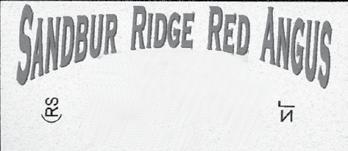
KOLLS CATTLE CO. TAYLOR KOLLS W4434 485TH AVE ELLSWORTH, WI 54011

International EL REBENQUE SA
ALVARO FERNANDEZ TUBINO RODO 473, EL REBENQUE SA FLORIDA FD, URUGUAY 94000 //


















Glacier Red Angus











Harold,


MTRAA Officers











AREA
AXTELL CATTLE COMPANY
Brian and Jamie Jo Axtell PO Box 21 – Anton, CO 80801 970.383.2332 or 970.554.1132
www.axtellcattlecompany.com

Follow us on Facebook!
Barenthsen RedAngus
701-464-5741
BBRedAngus.com




Jeremy & Jessica Bullinger 701-464-4893
8815 81st St. NW, Powers Lake, ND
BROKEN HEART RANCH
12523 245th Ave
Firesteel, SD 57633
(605) 850-9878 or (605) 865-3190
bhrredangus@lakotanetwork.com
www.pedersonredangus.com

Robert and Kara • Robby 5096 Campbell Rd • McIntosh, SD 57641 701-422-3721
www.campbellredangus.com


Producing Cattle That Perform For The Cattleman
FLATIRON RED ANGUS
1A BULLS & HEIFERS
MAINTENANCE/FEED EFFICIENCY EXPERTS
Cory & Katy Johnson 5822 CR 23 • Veteran, WY 82243 Cory 307-575-0169 • Katy 307-575-2677
KRAVIG RED ANGUS
“Cattle Working for You”
Sound Udders – Great Dispositions
Moderate Frames – Calving Ease – Excellent Growth www.kravigredangus.com h1: 719-446-5355 • h2: 719-446-5391 Karval, Colorado
Dan@RockingRRedAngus.com

High Altitude Registered Red Angus
SHEAMAN RANCH
Kerry and Debbie Sheaman
400 East Douglas Road • Fort Collins, CO 80524 (970) 493-7346 • Kerry.Sheaman@colostate.edu
Maternal, Disposition, Calving Ease & Stayability Traits
Joe, Cindy & Emily Frasier • 44600 Co. Road 118 • Limon, CO Ronny & Kelsey Pope • Ryan & Lindsay Frasier
719-740-1124 • www.solidrockredangus.com


Forster Red Angus
Raising
RED ANGUS
"We Breed Excitement" The Olsons
Edward, Jeanne, Carl, Craig and Caryn 16068 24 St. SE • Argusville, ND 58005 Phone/Fax (701) 484-5779
www.olsonredpower.com
Female Sale First Saturday in December Bull Sale Second Saturday in April Gary, Elaine, Tory & Tyler Sonstegard (320) 269-7290 (320) 226-2340 www.3scc.net

RED ANGUS
Scott & Connie Kueffler
Michala & Kirsti • Bonnie Kueffler Box 187 • Grenora, ND 58845
701-694-3620 (h) • 701-641-0519 (c)
redangus@nccray.com • www.dkredangus.net
Rob & Amy Hess Hershey, PA 717-821-1782 bowcreekbeef.com
Pasture to Plate Performance Tested Embryos, Semen and Cattle
Steven Harris, DVM 4720 Wrights Mill Road Trappe, MD 21673 410-924-3905 spharrisdvm@yahoo.com


Steve & Amy Weinreich 443-465-2959 Emma Kate Foster 443-257-5061 5224 Faraway Dr. Felton, PA 17322 crossroadsca le@gmail.com




• Private treaty cattle, semen and embryos






Dan & Alicia Stickel – (304) 545-7677
Kincheloe Road, Jane Lew, WV 26378





















FAYLOR RED ANGUS
SINCE
Mark and Kim Harms
Red Angus - Angus - Charolais


“Your Partner in Progress” Bulls, Females and Embryos by Private Treaty
Phone: (316) 722-6900
Cell: (316) 648-8310 rhodesredangus2@gmail.com



Tim
FLAMING
18 mo.& 2 yr. old Registered Bulls No feed ration, range tested, hard ‘n ready Commercial Bred Heifers in the fall Rick Pflughoeft • Ellsworth, KS 785-472-3734



Calendar of Events
March
1 Final Ad Reservation/Editorial Deadline for April Red Angus Magazine
1 Dille Red Angus, Buhl, ID
1 Lost Creek Red Angus Private Treaty, Molt, MT
1 Pederson’s Broken Heart Ranch, Firesteel, SD
2 Bieber Fever Yearling Bull Sale, Leola, SD
3 Sutherlin Farms Red Angus, Stevensville, MT 4 DK Red Angus, Williston,
Red Angus Online Bull Sale
20 Frank Cattle Co., Chappell, NE
22 Price-Murdock Bull & Female Sale, Stanfield, OR
24 Brenner Angus, Mandan, ND
25 Sutphin Cattle, Lamar, CO
26 Namken Red Angus, Lake Norden, SD
27 C-Bar Red Angus, Plainville, KS
27 Lone Tree Red Angus, Meadow, SD
27 Turtle River Cattle Co. Online Bull Sale, DVAuction.com
16 Sandridge Land & Cattle, Perkins, OK
17 Laubach Red Angus, Big Timber, MT
17 Mushrush Ranches, Strong City, KS
17 Schweitzer Red Angus, Pleasant Dale, NE
17-18 A&R Red Angus, Holdingford, MN, Online Sale, DVAuction.com
18 Iron Lorenzen Cattle Co., Madras, OR
18 Milk Creek Reds, Plevna, MT
18 Red HIll Farms More Than a Bull Sale, Lafayette, TN
18 Red Reckoning, Douds, IA
20 Jones Red Angus All Terrain Bull Sale, Walsh, CO
20 Flat Water Red Angus Gang, Broken Bow, NE
21 Green Mountain Red Angus, Logan, MT
22 Diamond H Red Angus, LaCrosse, KS
22 Westphal Red Angus, Grass Range, MT
23 Martin Red Angus, Glasgow, MT
25 Fischer Red Angus, Harlowton, MT
25 Rogers & Lile Red Angus, Strafford, MO
25 Wakefield Farms Performance Bull Sale, Dunlap, IA
25 West Wind Red Angus Private Treaty Open House & Bidding, Pella, IA
26 Dahlke Red Angus, Bagley, MN
27 West Wind Red Angus Online Sale Closes, DVAuction.com
31 Red Angus Photography Contest Deadline





















